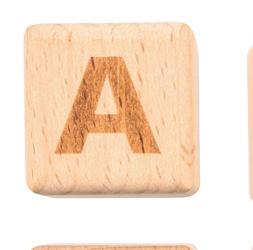
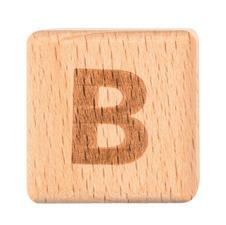
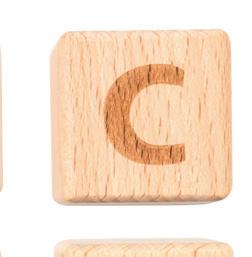
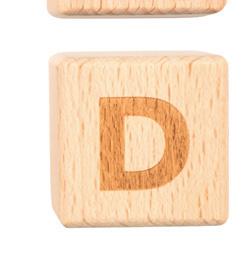

• PROVE inedite: quella d’INGRESSO GUIDATA e altre da svolgere in autonomia, con AUTOVALUTAZIONE






• PROVE inedite: quella d’INGRESSO GUIDATA e altre da svolgere in autonomia, con AUTOVALUTAZIONE
• QR code per i quesiti audio (LISTENINGS)
• ULTIME PROVE UFFICIALI come verifica finale
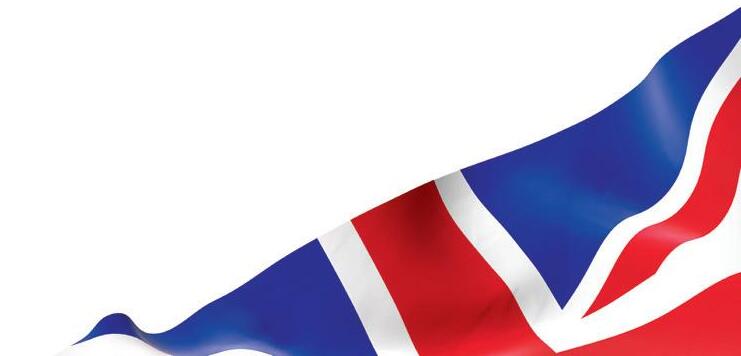
Gli eserciziari QUIZ INVALSI contengono un ricco percorso (128 pagine!) per prepararsi con graduale autonomia alle prove nazionali di italiano e matematica, previste per le classi seconda e quinta della Scuola Primaria, e di inglese (classe quinta).
L’eserciziario di inglese è così strutturato:
• prove inedite : quella d’ingresso GUIDATA, e altre da svolgere in autonomia con AUTOVALUTAZIONE;
• ultime prove ufficiali come verifica finale;
• in ogni prova sono riportati i QR CODE con cui scaricare gli audio per le listenings; tutte le tracce sono disponibili anche nell’area riservata Primaria.
AREA RISERVATA PRIMARIA
https://www.tresei.com/areariservata-primaria/
Per accedere è sufficiente seguire i passaggi indicati:
1. registrati all’area riservata Primaria
2. clicca sul bottone FILE AUDIO
3. seleziona la copertina interessata
• in fondo al libro sono presenti un riepilogo delle principali REGOLE grammaticali e un GLOSSARIO per il lessico.
Ideatrici dei testi:
Federica Goffi (prova 1), Silvia Civerchia, Louise Brett (brani audio) (prove 2 - 4)
Voci delle prove di ascolto: Alessio Bolognini, Louise Brett, David Brett, Francesco Brett, Pietro Baldassari, Luca Baldassari, Melania Lorenzetti, Maya Lorenzetti, Margaret Leung
Fonico: Matteo Schiaroli
Redazione: Silvia Amaolo, Federica Goffi, Silvia Piangerelli, Chiara Mammarella
Progetto grafico: Claudio Magrini
Copertina: Claudio Magrini
Impaginazione: Claudio Magrini
Illustrazioni: archivio Tresei; istock photo
Editrice Tresei Scuola Via Meucci, 1 60020 Camerata Picena (AN) Tel. 071/946210 - Fax 071/947a0951
www.tresei.com
©Tutti i diritti sono riservati
Istruzioni - prova di Inglese
Prova n. 1 - Guidata
Prova n. 1 - autovalutazione
Prova n. 2
Prova n. 2 - autovalutazione
Prova n. 3
Prova n. 3 - autovalutazione
Prova n. 4
Prova n. 4 - autovalutazione
PROVA UFFICIALE INVALSI N. 1
PROVA UFFICIALE INVALSI N. 1 - autovalutazione
PROVA UFFICIALE INVALSI N. 2
PROVA UFFICIALE INVALSI N. 2 - autovalutazione
PROVA UFFICIALE INVALSI N. 3
PROVA UFFICIALE INVALSI N. 3 - autovalutazione
La prova si compone di due parti. La prima parte è formata da testi che dovrai leggere per poi rispondere alle domande che li seguono. Nella seconda parte dovrai ascoltare brani in inglese e rispondere alle domande che troverai nel fascicolo.
Per svolgere la prima parte della prova avrai 30 minuti. Al termine della prima parte potrai riposarti e riprendere quando ti sarà detto di farlo. La seconda parte della prova durerà circa 30 minuti.
Le istruzioni prima di ogni domanda ti diranno come rispondere. Leggile dunque con molta attenzione.
La prima domanda è sempre un esempio.
Nella maggior parte dei casi, per ogni domanda ci sono quattro risposte possibili tra cui scegliere (A, B, C, D), ma una solo è quella giusta. Se ti accorgi di aver sbagliato, puoi scrivere NO accanto alla risposta che ritieni sbagliata e mettere una crocetta su quella corretta, come nell’esempio seguente:
Esempio 1
Q1 . Frank is
A. Judith’s son.
B. Judith’s father.
C. Judith’s brother.
D. Judith’s husband. NO
Esempio 2
Q1 . What’s the weather like in London?




Altre volte ti verrà chiesto di scegliere per ogni domanda tra tre possibili risposte (True, False, Not Given), ma una sola è quella giusta. Se ti accorgi di aver sbagliato, puoi scrivere NO accanto alla risposta che ritieni sbagliata e mettere una crocetta su quella che ritieni corretta, come nell’esempio seguente.
Esempio 3 NO True False Not given
Q1 He lives in London.
Q2 He loves cakes.
In altri casi ti verrà chiesto di inserire le lettere corrispondenti alla risposta corretta in una tabella o direttamente nel testo. Se ti accorgi di aver sbagliato, puoi barrare con una riga la risposta che ritieni sbagliata e riscrivere quella che ritieni corretta, come negli esempi seguenti.
Esempio 4
Q1 Sally likes hamburgers.
Q2 Mark likes chocolate cakes.



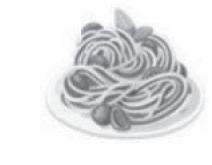
Esempio 5
Brown bears are (0) . They sleep in ( Q 1) and weight up to ( Q 2) B
A winter
B large mammals
C sharp teeth
D 680 kilos

Per fare una prova, ora rispondi a questa domanda.
Q1 . How many months are there in a year?
*Adatt. dalle istruzioni della prova nazionale di Inglese, classe quinta

Data:
Task 1
My dog
Read the text about a special friend.
Match the missing parts (A-F ) with the gaps (1-4). Use each part once only. There is one letter that you do not need. The first one (0) is an example.

I have a nice pet. It is a (0) ____. His (Q1) ____ is Jack. He moves his (Q2) ____ when he sees me, because he is very happy! We (Q3) ____ play together, in the garden. I throw the ball and he immediately runs and brings it back to me. We especially like going out for a (Q4) ____ in the park.
I think Jack is my best friend: he never makes me feel alone!
A dog
B tail
C dinner
D walk
E often
F name

• Per rispondere al task 1, collega ciascun vocabolo al significato corrispondente. Dopo aver letto il testo, cerchia quella che ti sembra la parola intrusa, poi prova a collocare le altre negli spazi giusti. dog tail dinner walk often name cena nome coda spesso passeggiata cane
• ORA COMPLETA IL TASK 1.
Task 2
Favourite hobbies
Read the sentences about some friends’ favourite hobbies.
Match the pictures (A-H) with the sentences (1-6). Write your answers in the boxes.
Use each picture once only. There is one picture that you do not need. The first one (0) is an example.








Which is the right hobby?
0 Sarah likes using colours in her drawings. C
Q1 Mark feels very happy when he plays for his team.
Q2 Mary likes spending her free time in the kitchen.
Q3 John doesn’t like sports, but he loves relaxing.
Q4 Susy can’t swim but she loves cycling and nature!
Q5 Paul is a dreamer and he likes all kind of stories.
Q6 Ketty likes the sea and water animals.
• Per rispondere al task 2, leggi le frasi riportate in tabella e scrivi il nome del personaggio corrispondente sotto ogni immagine.
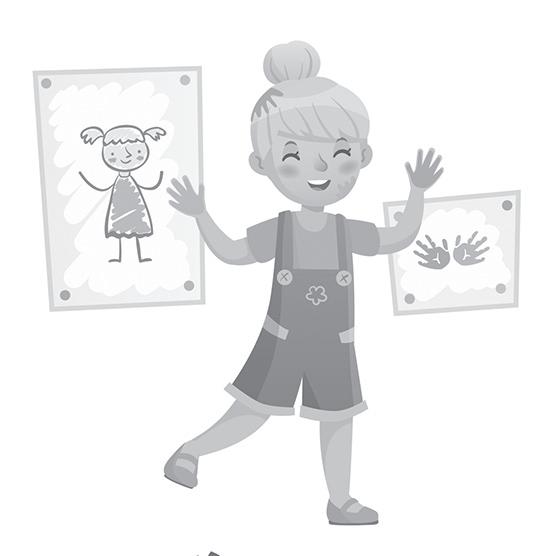







Task 3
My typical Sunday
Read the text about Jenny’s typical Sunday.
Are the sentences (1-6) true, false or not given? Put a cross ( ) in the correct box. The first one (0) is an example.
Dear Tom, on S unday I usually get up at half past eight. I wash my face, I put on my favourite tracksuit and I go out. At nine o’clock in the morning I meet my friend Laura. We go to a bar in the centre of the town, where we have our breakfast: brioche and cappuccino. Then, we are ready for a long walk in the public gardens.

After about two hours, we greet each other and then I come back home. I usually do the housework, because I work hard all the other days of the week, so I haven’t much time to take care of my house or my vegetable garden. Then I have a shower, I put on a pair of jeans and a pullover and I go to my parents’ home, where we have lunch together. We talk and smile, and then I come back home again.

In the afternoon, I like watching TV, reading a book, or doing shopping.
In the evening, I usually have dinner with some friends or we go to the cinema.
I never go to bed before eleven o’clock.
A big hug!
Jenny

True False Not given
0 Jenny gets up at half past eight.
Q1 Jenny meets Laura at 10:00 a.m.
Q2 She has breakfast at home.
Q3 Jenny and Laura run together.
Q4 Jenny has a garden with trees and flowers.
Q5 Jenny works from Monday to Saturday.
Q6 Jenny has dinner with her parents on Sunday.
• Per rispondere al task 3, leggi ogni affermazione riportata in tabella. Poi rileggi tutto il testo e rifletti sulle seguenti frasi:
- “At nine o’clock in the morning I meet my friend Laura...”
A quale numero corrisponde l’orario indicato?
10:00 a.m.
- “... where we have our breakfast...”
A quale luogo si riferisce la parola evidenziata in neretto?
8:30 a.m. 9:00 a.m. a bar in the centre Jenny’s house we don’t know
- “... we are ready for a long walk...”
A quale immagine si riferisce la parola evidenziata? Barra con una X, poi accanto a ciascuna scrivi “to run” o “to walk”.



- “I haven’t much time to take care of my house or my vegetable garden ” Per ogni affermazione, barra la risposta giusta.
Jenny has got a vegetable garden. Jenny has got a garden.
In Jenny’s vegetable garden there are trees and flowers.

Yes No We don’t know
Yes No We don’t know
Yes No We don’t know
- “I work hard all the other days of the week...”
Jenny talks about her typical Rispondi alle seguenti domande e completa il testo.
Does Jenny work on this day?
Write all the days of the week:
Yes No
- “then I go to my parents’ home , where we have together” Rileggi il testo e completa la frase con la parola giusta.
• ORA COMPLETA IL TASK 3.
Task 4
Happy birthday!
Read the invitation cards.
Choose the correct answer (A, B, C or D) for each of the sentences 1-5. Put a cross ( ) in the correct box. Only one answer is correct. The first one (0) is an example.

0. The childrens’ names are
A. B. C. D.
John and Olympia. Olympia and Florence.
Jonny and Olympia.
Jonathan and Olivia.

Q1. Who has a birthday party at the weekend?
Jonathan. Olivia. Neither of them. Both of them.
SVOLGIMENTO
Per rispondere al quesito 1, rifletti con le seguenti domande:
- Qual è la data della festa di compleanno di Jonathan?
- Qual è la data della festa di compleanno di Olivia?
Scrivi i giorni della settimana che corrispondono al weekend.

• ORA RISPONDI AL QUESITO 1 (Q1).
Where is Olivia’s party?
Q2. At home. In a swimming pool.
A. B. In a garden. We don’t know.
SVOLGIMENTO
C. D.

• Per rispondere al quesito 2, ritrova i seguenti indirizzi nei biglietti di invito e, sotto, scrivi i luoghi a cui si riferiscono. Collegali, poi, al nome del bambino corrispondente.
8121 BROOKLYN STREET NEW YORK
4123 BRANNON STREET
LOS ANGELES, CA
Jonathan Olivia
• ORA RISPONDI AL QUESITO 2 (Q2).
Q3.
Who has a birthday party in the summer?
C. D. Olivia. Jonathan. A. B.
Neither of them. Both of them.
SVOLGIMENTO
• Per rispondere al quesito 3, scrivi i nomi dei mesi nella stagione corrispondente, poi cerchia di verde quello della festa di Jonathan e di rosso quello di Olivia.



Q4.
SPRING: SUMMER:
AUTUMN:
• ORA RISPONDI AL QUESITO 3 (Q3).


WINTER:
At what time does Olivia’s party start?
We don’t know. At midday. A. B. In the evening. At half past twelve in the afternoon. C. D.
SVOLGIMENTO

• Per rispondere al quesito 4, osserva il biglietto di invito di Olivia. Vedi scritto l’orario di inizio del party?
L’orario che hai scritto a quale parte della giornata corrisponde?
Se hai risposto “sì”, scrivilo: Sì No Morning Afternoon Evening Night
Scrivi in numero gli orari del quesito 4: midday = half past twelve in the afternoon =
• ORA RISPONDI AL QUESITO 4 (Q4).
Q5. Olivia. Jonathan.
Which child is older?
A. B.
C.
D.
We don’t know. They have the same age.
Per rispondere al quesito 5, rifletti con le seguenti domande:
- How old is Jonathan?
- How old is Olivia?
- Che cosa rappresenta la parola “ older ”? Colora la risposta giusta.
È un comparativo di maggioranza È un comparativo di minoranza
Osserva e leggi i fumetti.

Today is my 9th birthday!
I am 12 years old!

I am ten years old!
Completa le frasi scegliendo le parole corrette (aiutati con le regole riportate a pagina seguente).
- Kevin is (more young/younger/older) than Susy.
- Susy is (older/younger) than Kevin.
- John is (more old/older/less old) than Kevin. (John/Susy/Kevin) is (the oldest/most old) !

MAGGIORANZA
Aggettivo - er + than (aggettivi brevi)
Es.: Mark is taller than Alex.
More + aggettivo + than (aggettivi lunghi)
Es.: Kate is more creative than Sarah.
Less + aggettivo lungo + than
Es.: Luke is less intelligent than Paul.
The + aggettivo - est (aggettivi brevi)
Es.: This day is the longest of the year.
The + most + aggettivo (aggettivi lunghi)
Es.: That bag is the most expensive of the shop.
MINORANZA
UGUAGLIANZA
Con gli aggettivi corti si usa la seguente forma:
Es.: Luke isn’t as nice as Paul.
As + aggettivo + as
Es.: Claire is as smart as Sam.
• ORA RISPONDI AL QUESITO 5 (Q5).
Task 5
Beautiful places in England
Read the sentences about some English beautiful landscapes or monuments.
Match the pictures (A-G) with the sentences (1-5). Write your answers in the boxes. Use each picture once only. There is one picture that you do not need. The first one (0) is an example.







What place is it?
0 It’s a clock tower known for its hour bell. F
Q1 This enormous railway bridge links Fife to Edinburgh.
Q2 They are sea cliffs in Ireland, with a lot of wildlife.
Q3 It is situated on Castle Rock. It was a royal residence but also a war prison.
Q4 Inside it, you can get a panoramic view of London.
Q5 It’s famous for its lakes, forests and mountains.
Per rispondere al task 5, devi innanzitutto conoscere il significato di alcuni termini. Scrivili sulle righe delle immagini corrispondenti.
FOREST • RAILWAY • BRIDGE • CLIFF • MOUNTAIN • CASTLE • CATHEDRAL • LAKE



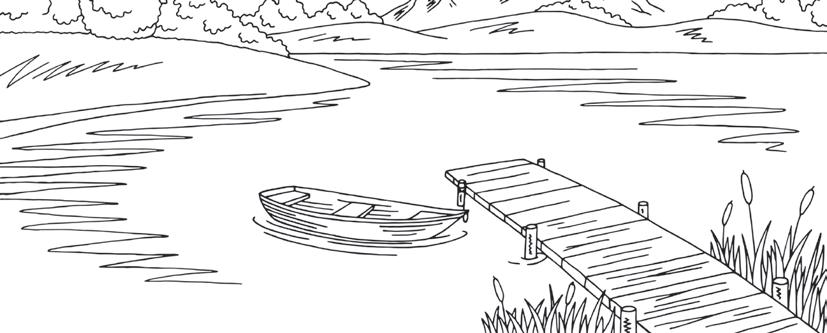





Rispondi alle seguenti domande, inserendo le letterine corrispondenti alle immagini del task 5 (pagg. 16-17).
In which pictures do you see a bridge?
In which one is the bridge very long?
In which pictures do you see a natural landscape?
In which one are there some cliffs?
In which picture can we see a building on a rock?
Task 6
My summer holidays
Listen to some children talking about their summer holidays.
While listening, match the pictures (A-F) with the speakers (1-4).
Write your answers in the boxes. Use each picture once only. There is one picture that you do not need. The first one (0) is an example. You will hear the recording twice. You will have 20 seconds at the end of the second recording to complete your answers.
You now have 20 seconds to look at the task.
0 Example A
Q1 Speaker 1
Q2 Speaker 2
Q3 Speaker 3
Q4 Speaker 4




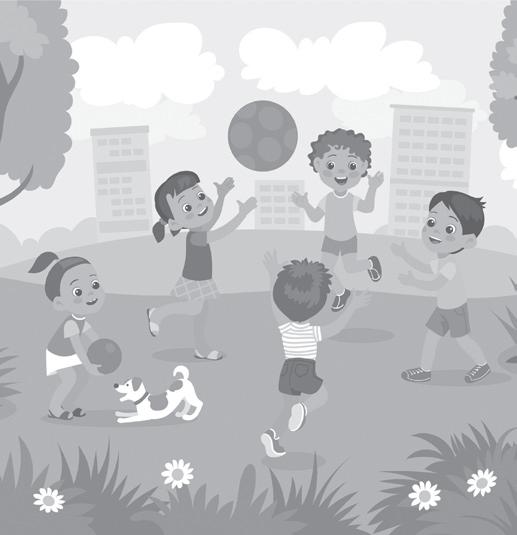

Per rispondere al task 6, mentre ascolti, dovresti conoscere il significato di alcune parole. Scrivi i seguenti termini sotto l’immagine corrispondente e inserisci il nome del bambino a cui si riferiscono.
LAKE • BEACH • PATH • TENT • PARK • BALL
SWIMMING • SUNBATHING


- Susy
- Jane
- Colin
- Cameron
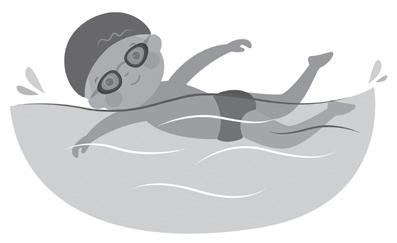


- Susy
- Jane
- Colin
- Cameron

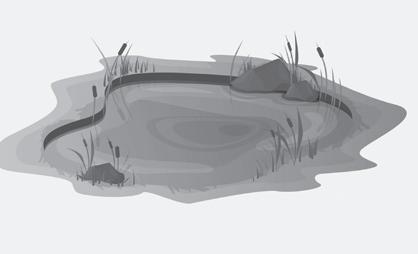
- Susy
- Jane
- Colin
- Cameron
- Susy
- Jane
- Colin
- Cameron
- Susy
- Jane
- Colin
- Cameron

- Susy
- Jane
- Colin
- Cameron

- Susy
- Jane
- Colin
- Cameron
- Susy
- Jane 3 - Colin
- Cameron
Task 7
Listen to a boy, Simone, talking with a tourist.
While listening, choose the correct answer (A, B, C or D) for each of the sentences 1-5.
Put a cross ( ) in the correct box. Only one answer is correct. The first one (0) is an example. You will hear the recording twice. You will have 20 seconds at the end of the second recording to complete your answers. You now have 20 seconds to look at the task.

0. What nationality is the tourist? a gym. a supermarket. a cinema. a theatre.
Q1. The tourist wants to go to...
He’s Italian.
He’s German.
He’s French.
He’s English.
SVOLGIMENTO
Per rispondere al quesito 1, devi capire cosa chiede il turista a Simone. Ascolta il brano attentamente e barra con una X la domanda giusta.
Is there a gym near here?
Is there a cinema near here?

Is there a supermarket near here?
Is there a theatre near here?
Scrivi ogni parola evidenziata sotto l’immagine corrispondente.
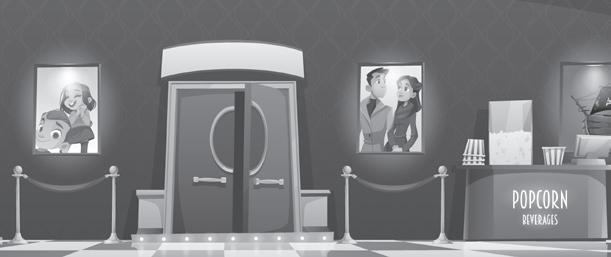

• ORA RISPONDI AL QUESITO 1 (Q1).
Q2.
He decides to go...
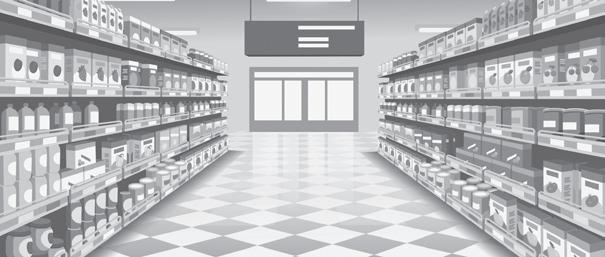

by bus. A. by tube. B. walking. C. with Simone. D.
SVOLGIMENTO
Per rispondere al quesito 2, devi capire cosa consiglia Simone al turista:
To walk or to go by tube.
To walk or to go by bus.
To go with him.
Cosa gli domanda il turista subito dopo?
Where’s the bus stop?
Where’s the tube station?

Where’s the bus station?
Can you show me the way?
• ORA RISPONDI AL QUESITO 2 (Q2).
Q3.
Which instructions does Simone give to the tourist?
A. B. C. D.
To go straight on, turn left and then cross the road.
To go straight on, turn right and then cross the road.
To turn left, go straight on, go past the theatre and cross the road.
To go past the theatre, go straight on and then turn left.
SVOLGIMENTO
Per rispondere al quesito 3, mentre ascolti, barra con una X le istruzioni di Simone, poi numerale, in base all’ordine in cui compaiono.
Attenzione: c’è un’istruzione di troppo!
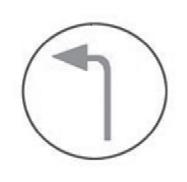


cross the road
attraversa la strada


turn left gira a sinistra turn right gira a destra go straight on prosegui, vai avanti go past (the theatre) vai oltre (supera il teatro)

• ORA RISPONDI AL QUESITO 3 (Q3).
Q4.
Where is the gym?
It’s behind the Colosseo.
It’s in front of the Colosseo.
It’s far from the Colosseo.
It’s in front of the tube station.

Per rispondere al quesito 4, prova a comprendere il significato delle seguenti parole. Scrivile sotto all’immagine giusta.
BEHIND • NEAR • FAR • IN FRONT OF





Mentre ascolti, poni attenzione alla frase seguente. Scrivi la parola mancante (scegliendola tra quelle scritte sopra).
Your stop is “Colosseo”. When you get off the tube, you can also look at this beautiful monument, because the gym is it !
Nella frase che hai appena completato, a cosa si riferisce il pronome it ?
Colosseo Tube station

• ORA RISPONDI AL QUESITO 4 (Q4).
Q5.
Why does Simone suggest “Wellness for you!” to the tourist?
A. B. C. D.
Because it has good trainers!
Because it’s near the Colosseo.
Because he works there.
Because it’s very cheap.

Per rispondere al quesito 5, dopo aver ascoltato la parte finale del brano, completa il dialogo seguente con le parole mancanti.
Tourist: Ok, and do you know the of the ?
Simone: Oh yes! It’s “Wellness for you!”, I it, because I sometimes there! It’s a place and the are very good!
Poi rifletti, rispondendo con TRUE o FALSE.
• Simone works at the gym.
• Simone says that the gym is very cheap.
• The tourist asks Simone to visit the Colosseo.
• Simone says that there are good trainers in the gym.
• ORA RISPONDI AL QUESITO 5 (Q5).
Task 8
Julie’s best friends
Listen to Julie talking about her best friends.
While listening, choose the correct answer (A, B, C or D) for each of the sentences 1-4.
Put a cross ( ) in the correct box. Only one answer is correct.
TRACK 3
The first one (0) is an example. You will hear the recording twice. You will have 20 seconds at the end of the second recording to complete your answers.
You now have 20 seconds to look at the task.
0. How many best friends has Julie got?
We don’t know. Three. One. Two. A. B. C. D.
SVOLGIMENTO
Q1. Who lives near Julie?
Sarah. Daniel. Both of them. Neither of them. A. B. C. D.

Per rispondere al quesito 1, devi porre attenzione a una frase in particolare. Dopo averla ascoltata, barra il testo corrispondente.
Daniel is my neighbour
Sarah is my neighbour.
Sarah and Daniel are my neighbours.
Conosci il significato della parola evidenziata? Se no, cercalo sul dizionario e scrivilo qui:
• ORA RISPONDI AL QUESITO 1 (Q1).
What is Daniel like? Q2.
A.
B. C. D.
He’s very tall.
He has got brown hair.
He’s shorter than Julie.
He’s taller than Sarah.
SVOLGIMENTO
Per rispondere al quesito 2, ascolta di nuovo il testo, poi colora i capelli e gli occhi di questi bambini, in base al nome che decidi di scrivere sotto. Barra con una X il bambino che non rappresenta nessuno.
JULIE • SARAH • DANIEL

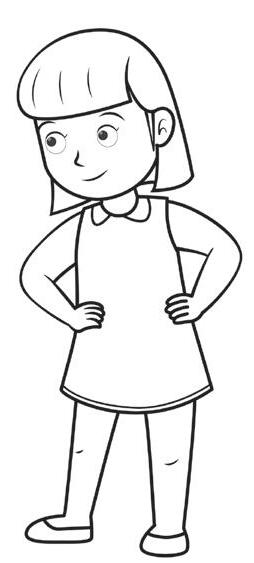
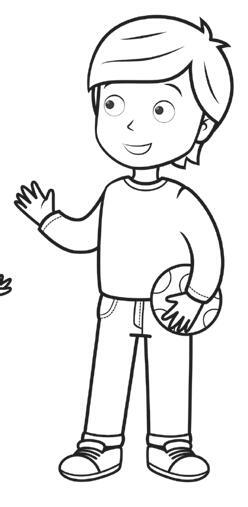
Poi rifletti, rispondendo con TRUE o FALSE.
• Daniel is shorter than Julie.
• Daniel is shorter than Sarah.
• Daniel has got brown hair.
• Daniel is tall.
• ORA RISPONDI AL QUESITO 2 (Q2).

(* per ripassare le regole del comparativo vai a pag. 15.)
Q3.
Where does Julie sometimes go with her father?
A.
B. C. D.
They go to see Sarah riding a horse.
They go to see Sarah at her school dance.
They go for a walk with their dog.
They go to see Daniel playing football.
Per rispondere al quesito 3, devi porre attenzione a una frase in particolare.
Dopo averla ascoltata, completala scrivendo queste parole al posto giusto.
MATCHES • STADIUM • GOAL
Sometimes, my father and I go to the , to see his and we clap our hands when he scores a !
Barra con una X l’immagine a cui ti fa pensare la frase che hai completato.
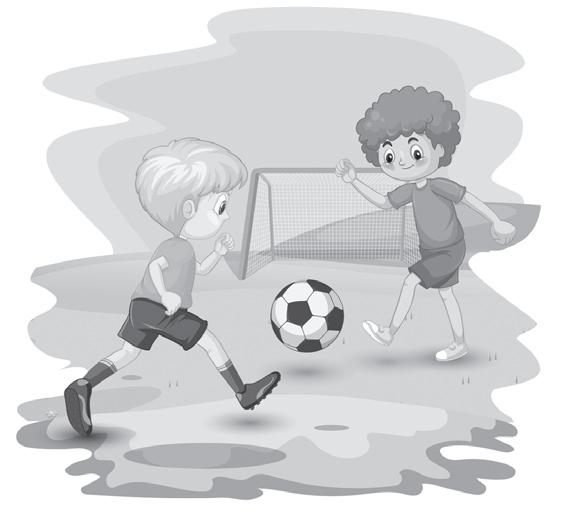



Nella frase che hai completato, a chi si riferisce il pronome “I”?
Julie Daniel Sarah
A chi si riferisce l’aggettivo “his”?
Daniel Julie’s father Sarah

• ORA RISPONDI AL QUESITO 3 (Q3).
Q4.
A.
B. C.
D.
Why does Julie meet Sarah every day?
Because they are in the same class at school.
Because they attend the same dance school.
Because they always do their homework together.
Because Sarah lives near Julie.

Per rispondere al quesito 4, devi porre attenzione a una frase in particolare. Dopo averla ascoltata, completala scrivendo queste parole al posto giusto.
Attenzione: ci sono due parole in più! Barrale con una X.
I meet Sarah every day: we the same class, so we do our homework together.
Rifletti rispondendo alle seguenti domande.
- Who likes dancing?
- Who is Julie’s neighbour?
- Do Julie and Sarah do their homework together every day?
• ORA RISPONDI AL QUESITO 4 (Q4).
Task 9
In the kitchen
Listen to Lisa helping her mother.
While listening, choose the correct answer (A, B, C or D) for each of the sentences 1-5.
TRACK 4
Put a cross ( ) in the correct box. Only one answer is correct. The first one (0) is an example. You will hear the recording twice. You will have 20 seconds at the end of the second recording to complete your answers.
You now have 20 seconds to look at the task.
0. Where are Lisa and her mum?
A. B. C. D.
In the living room. In the garage. In the garden. In the kitchen.
Q1. What do they want to cook?
A. B.
C. D.
A soup. A cake. Some pasta. Some vegetables.
Per rispondere al quesito 1, poni particolare attenzione a questa frase:
Mum: Hello Lisa, I am watching a video on how to make a good apple pie !
Barra con una X l’immagine a cui si riferisce la parola evidenziata.



• ORA RISPONDI AL QUESITO 1 (Q1).

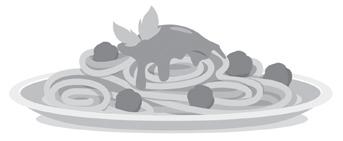

Q2.
How many eggs do they need?
A. B.
C.
D.
Two. One. Four. Three.
SVOLGIMENTO
Per rispondere al quesito 2, poni particolare attenzione a questo breve dialogo tra Lisa e la mamma. Ascolta con attenzione e completa con il numero giusto.
FOUR • THREE • FIVE • SIX
Lisa: Ok! How many eggs do you need? Mum: eggs!
Scrivi in cifre il numero che hai inserito.
• ORA RISPONDI AL QUESITO 2 (Q2).

Q3. Flour. Tomato. Sugar. Lemon. A. B. C. D.
Which ingredient don’t they need?
SVOLGIMENTO
Per rispondere al quesito 3, ascolta di nuovo con attenzione e barra con una X gli elementi che senti nominare. Qual è l’intruso?




• ORA RISPONDI AL QUESITO 3 (Q3).
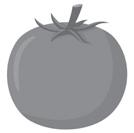
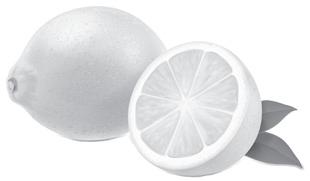



What special event do they want to celebrate? Q4.
A. B. C.
D.
Lisa’s birthday.
Lisa’s mother’s birthday.
Lisa’s grandmother’s birthday.
Lisa’s grandfather’s birthday.
SVOLGIMENTO
Per rispondere al quesito 4, poni attenzione a una frase in particolare. Ascoltala e completala con la parola corrispondente.
Tomorrow it is your birthday.
Chi pronuncia questa frase?
Lisa La mamma
A chi si riferisce l’aggettivo evidenziato?
• ORA RISPONDI AL QUESITO 4 (Q4).

A Lisa Al la mamma
Q5.
Why does the mother say that cooking is not a game for children?
A. B. C. D.
Because Lisa can’t help her mother. Because, sometimes, it can be dangerous.
Because Lisa can’t cook.
Because Lisa doesn’t like cooking.
Per rispondere al quesito 5, ascolta l’ultima parte del dialogo tra Lisa e la mamma. Poi, barra con una X TRUE o FALSE.
• Lisa doesn’t like cooking.
• Lisa can cut the apples.
• Lisa helps her mother to cook.
• Lisa can’t go near the oven: it’s too hot.

FALSE
FALSE
FALSE
FALSE
Barra con una X le immagini che, secondo la mamma, Lisa non dovrebbe fare.
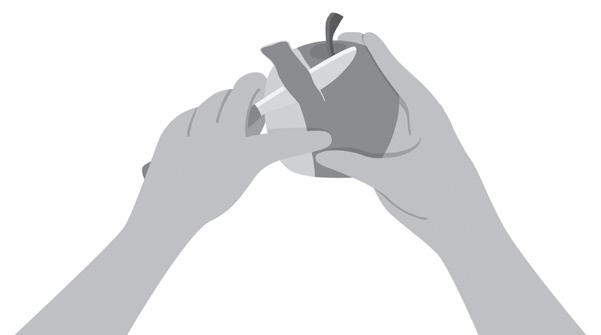

• ORA RISPONDI AL QUESITO 5 (Q5).

Barra con una x i quesiti a cui hai risposto correttamente.
Task 1 Q1 Q2 Q3 Q4
Task 2 Q1 Q2 Q3 Q4 Q5 Q6
Task 3 Q1 Q2 Q3 Q4 Q5 Q6
Task 6 Q1 Q2 Q3 Q4
Task 7 Q1 Q2 Q3 Q4 Q5
Task 4 Q1 Q2 Q3 Q4 Q5
Task 8 Q1 Q2 Q3 Q4
Task 5 Q1 Q2 Q3 Q4 Q5
Task 9 Q1 Q2 Q3 Q4 Q5
Ora osserva le tabelle e rispondi: - hai risposto correttamente alla maggior parte dei quesiti? SÌ NO - quanti punti hai totalizzato sul totale? /44 - come hai trovato questa prova? Barra la faccina corrispondente.

Data:
Read the text about the National Marine Aquarium. Choose the correct answer (A, B, C or D) for questions 1-4. Put a cross ( ) in the correct box. Only one answer is correct. The first one (0) is an example.
Welcome to the National Marine Aquarium!
Our Atlantic Ocean tank is home to large nurse sharks, sand tiger sharks and our new lemon sharks. It contains 2.5 million litres of water! The Atlantic Ocean tank is home to three species of turtle. When you see them, don’t forget to take a selfie!
What a fantastic adventure!
Our Great Barrier Reef tank has two zebra sharks with a really interesting story, they have no father!
Check out Plymouth to find out more about our great location. You can have a wonderful day out here!

0. Where is the National Marine Aquarium?
In Plymouth (UK). In New York. We don’t know.
In the Atlantic Ocean.
Q1. the turtles. all the sharks. the zebra sharks. the tiger sharks.
You can take a selfie with...
A. B. C. D.
Q2.
How many litres of water does the Atlantic Ocean tank contain?
A. B. C. D.
Two and a half million litres.
Twenty-five million litres.
Fifty-two million litres.
Two million and fifty-five litres.
Q3. We don’t know. 3. 2. 5.
How many zebra sharks are there in the Great Barrier Reef tank?
A. B. C. D.
Why do the zebra sharks have an interesting story? Q4
A. B. C. D.
They haven’t got a mother. They come from the ocean. They are twins. They haven’t got a father.
Task 2
How can you spend the summer holidays?
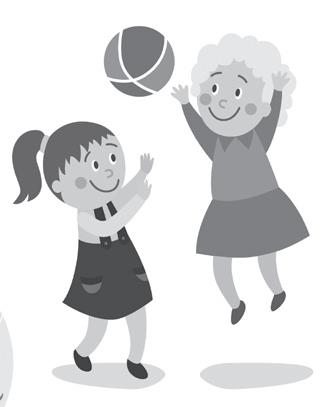






0 We are playing volleyball.
Q1 I’m swimming in the sea.
Q2 We are having a barbecue.
Q3 I’m fishing in the lake.
Q4 I’m eating an icecream.
Q5 I’m riding a bike.
Q6 I’m trekking in the mountains.


Match the pictures (A-l) with the sentences (1-6). There are two pictures that you do not need. Write your answers in the boxes. The first one (0) is an example. 0 Q1 Q2 Q3 Q4 Q5 Q6
Read the text about an ancient plant: the baobab. Are the sentences (1-6) true, false or not given? Put a cross ( ) in the correct box.
The first one (0) is an example.
The baobab is the world’s biggest flowering tree. It grows in the savanna in Africa and can live for 3.000 years.
It is a strange plant, with branches that look like roots reaching for the sky.
One ancient baobab tree in Zimbabwe is so large that up to 40 people can go inside it. This kind of tree stores a great quantity of water and grows fruit that feeds animals and humans.
People cook the leaves and eat them like spinach, or make traditional medicine with them.
From this tree, people can make baskets, cloth and waterproof hats.
(Rid. e adatt. da www.heraldsun.com)

0 The baobab is a savanna tree.
Q1 The baobab usually has a very long life.
Q2 The ancient Zimbabwe baobab is not very big.
Q3 Animals can eat baobab fruit.
Q4 People can make medicine from the leaves.
Q5 A lot of birds live in the baobab.
Q6 It is possible to make clothes from this tree.
Task 4
Read the text about a special teacher. Answer the questions (1-5). Use a maximum of 4 words. Write your answers in the boxes. The first one (0) is an example.
One of Mike’s teachers is special: he raps to his students. The students like it. It makes studying more interesting. The teacher’s name is Louis, he’s 26 years old. He starts every maths lesson singing rhymes quickly (oh yes! He RAPS in the class!) and he asks the students to do the same. His method follows the concept that repetition and rhyme can help with memorization. Memorization helps with learning. The rapping teacher is very popular at the school.
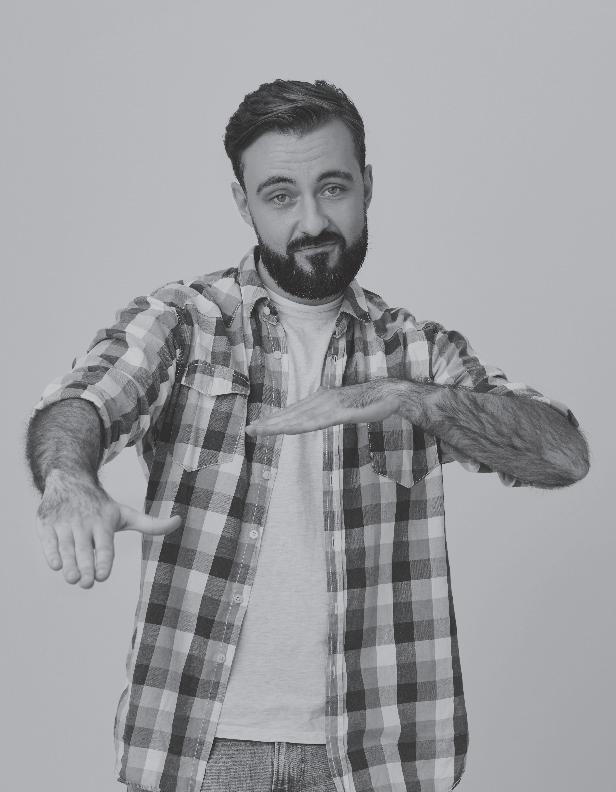
Q1 How old is Mike’s teacher?
Q2 What is Mike’s teacher’s name?
Q3 What subject does he teach?
Q4 What is useful for memorization?
Q5 Do the students like Louis’ lessons?
Task 5
Charlie
TRACK 5
Listen to a boy talking about himself. While listening, choose the correct answer (A, B, C or D) for questions 1-7. Put a cross ( ) in the correct box. Only one answer is correct. The first one (0) is an example. You will hear the recording twice. You will have 20 seconds at the end of the second recording to complete your answers.
You now have 20 seconds to look at the task.
0. Charlie has got... long hair. blond hair. curly hair. short hair.
A. B. C. D.
He has got... Q1. a sister and a brother. three sisters and a brother. a sister and three brothers. two sisters and two brothers.
A.
B.
C.
D.
His sister Amy... Q2. goes to school. is 12. goes to university. works.
A. B. C. D.
Amy can... Q3. drive. sing. swim. cook. A.
B.
A.
B. C. D.
His dad... Q5.
His brother Leo is... Q4. is an engineer. is a doctor. stays at home with Leo. works in an office.
A. B. C. D.
A. B. C. D. children. computers. his mother. cars. A. B. C. D. 9. a baby. a teenager. a student.
C. D. a teacher. a chef. a shop assistant. a computer programmer.
His mum is... Q6. The boy wants to work with... Q7.
Task 6
Listen to a conversation between a woman and someone who works at a water park. While listening, complete the information below. Use a maximum of 4 words. Write your answers in the boxes. The first one (0) is an example. You will hear the recording twice. You will have 20 seconds at the end of the second recording to complete your answers.
You now have 20 seconds to look at the task.

Date: 7th May BIRTHDAY PARTY
Party package:
5-9 years (£ 50)
10- years (£ )
Food and drinks (£ 32)
Includes hamburgers, and a soft drink
Birthday cake (£ 25)
Name of child:
Age of child:
of birthday:
Task 7
Breakfast
Listen to some people talking about what they have for breakfast. While listening, match the picture (A-F) with the correct speaker (1-4). There is one picture that you do not need. The first one (0) is an example. You will hear the recording twice. You will have 20 seconds at the end of the second recording to complete your answers.
You now have 20 seconds to look at the task.




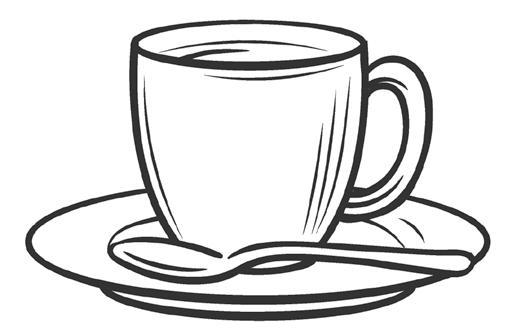



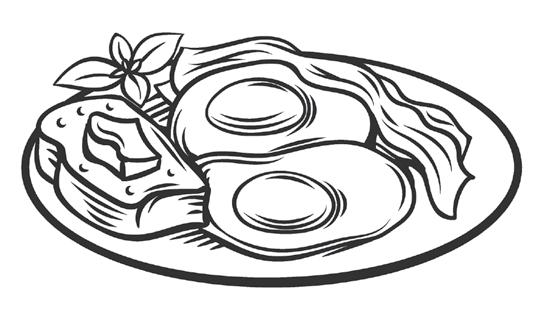
Task 8
TRACK 8
Listen to a woman describing her house. While listening, choose the correct answer (A, B, C or D) for questions 1-5. Put a cross ( ) in the correct box. Only one answer is correct. The first one (0) is an example. You will hear the recording twice. You will have 20 seconds at the end of the second recording to complete your answers. You now have 20 seconds to look at the task.
0. In the garden there are... some trees. no trees. C. D. lots of flowers. lots of trees.
They use the fireplace in... Q1. December. autumn. A. B. spring. June. C. D.
The kitchen is... Q2. big. old. A. B. small. new. C. D.
From her bedroom you can see... Q3. the garage. the front garden. A. B. the road. the school. C. D.
The house has got... Q4. one bathroom. no shower. A. B. two bathrooms. a bidet. C. D.
Sometimes she works... Q5. in the kitchen. in the living room. A. B. in the garage. in the study. C. D.
Barra con una x i quesiti a cui hai risposto correttamente.
Task 1
Q1 Q2 Q3 Q4
Task 2 Q1 Q2 Q3 Q4 Q5 Q6
Task 5 Q1 Q2 Q3 Q4 Q5
Task 3 Q1 Q2 Q3 Q4 Q5 Q6
Task 4 Q1 Q2 Q3 Q4 Q5
Task 8 Q1 Q2 Q3 Q4 Q5
Ora osserva le tabelle e rispondi:
- hai risposto correttamente alla maggior parte dei quesiti? SÌ NO - quanti punti hai totalizzato sul totale? /43 - come hai trovato questa prova? Barra la faccina corrispondente.

Data:
Task 1
Kids Summer Camp
Read the text about Kids Summer Camp. Choose the correct answer (A, B, C or D) for questions 1-4. Put a cross ( ) in the correct box. Only one answer is correct. The first one (0) is an example.

£ 180 per child for a week
Storytelling, Experiments, Analysis, encourage kids in problem solving and help to improve vocabulary.
Every day it is possible to play volleyball and tennis. On Monday and Friday kids can ride a horse or swim with PE teachers.
Summer activities for kids from Monday to Friday (7:30 a.m. - 4 p.m.)
Every afternoon, kids can explore nature around the camp and do a treasure hunt: Pirates, Science, Space, etc.
Email: summercamp@tresei.com
0. What is Kids Summer Camp?
A. B. C. D.
Q1.
A place where kids can spend their holidays and do activities. A place for parents.
A place where parents are not allowed.
A free park.
How much is the camp?
A. B. C. D.
It’s free.
£ 180 per child for a week. The price is different for each child.
We don’t know.
Q2. Never. Every afternoon.
When can the children play tennis?
A. B. C. D.
Q3.
On Monday and Friday. Every day.
When is the camp open?
A. B. C. D.
Q4.
On Monday and Friday. At night in the summer.
From Monday to Friday (7:30 a.m.- 4 p.m.), in July and August. All the summer.
How is it possible to contact the camp?
We don’t know. By email.
C. D.
A. B. It’s not possible. You have to visit the camp.
Task 2
Match the pictures (A-l) with the name of one of Andrew’s friends (1-6). There are two pictures that you do not need. Write your answers in the boxes. The first one (0) is an example.








0 Gina loves rollerblading.
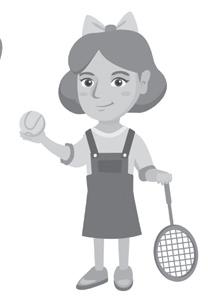
Q1 Mark is my best friend. He loves computers.
Q2 John is a skater.
Q3 Maria plays tennis every weekend.
Q4 Sarah loves reading.
Q5 David’s hobby is photography.
Q6 Mattia always plays on his smartphone.
Read the text about people who work on a space station. Are the sentences (1-6) true, false or not given? Put a cross ( ) in the correct box. The first one (0) is an example.
Astronauts have a lot of things to do. Each day in orbit is carefully planned. The 12-hour working day on the International Space Station begins with a wake-up call.
They can’t have a shower, they use a special cloth. Then, the astronauts have breakfast and start work for the day with mission control. Space stations are like big, complicated houses that need constant attention. There are three meals – breakfast, lunch and dinner – though drinks and snacks are always available. The astronauts often do scientific experiments and sometimes they have to involve scientists on Earth. At least two hours each day are spent on exercise. This is essential to keep the astronauts fit and healthy.
(Adatt. da: www.esa.int)
0 The text is about life on Mars.
Q1 The working day lasts about twelve hours.
Q2 There aren’t daily meal sessions.
Q3 Space stations are simple structures and the astronauts can relax and do nothing.
Q4 The astronauts do daily physical exercise.
Q5. The astronauts are linked with scientists on Earth.
Q6 Sometimes the astronauts are sad.
Task 4
Read the text about an Irish girl. Complete the sentences (1-5).
Use a maximum of 4 words. Write your answers in the boxes. The first one (0) is an example.

I’m Lucy and I’m 11 years old. I live in a small city in Ireland. I don’t have a lot of friends, but they are special friends: Marion, Alex and Tom. We are in the same class at school. Marion is my best friend: we are always together and she keeps my secrets. Alex plays the guitar and Tom plays the drums in our rock band, “The Blue Tigers”. They are very special friends: they accept me for who I am and make me feel better when I’m sad. We have a good time together. A friend is someone who wants you to be happy.
Q1 Lucy is from...
Q2 Lucy’s friends’ names are... (Give three answers)
Q3 Lucy has a rock band with...
Q4 “The Blue Tigers” is...
Q5 For Lucy, a friend is someone who wants you...
Task 5
Carly
Listen to a girl talking about herself. While listening, choose the correct answer (A, B, C or D) for questions 1-7. Put a cross ( ) in the correct box. Only one answer is correct. The first one (0) is an example. You will hear the recording twice. You will have 20 seconds at the end of the second recording to complete your answers. You now have 20 seconds to look at the task.
0. Carly is... 17. 14. 12. 15. A. B. C. D.
She lives...
Q1. in the mountains. in a village. by the sea. in the countryside.
A.
B.
C.
D.
She likes... Q2. surfing. running. playing football. playing basketball.
A. B.
C. D.
She goes to school... Q3. by bus. by car. by bike. on foot.
A. B. C. D.
Carly sometimes goes to school with her... Q4. mother. father. A. B. brother. sister. C. D.
Carly’s sister is good at... Q5. French. English. A. B. maths. art. C. D.
Carly doesn’t have a dog because... Q6. dogs are dirty. her house is small.
A. B. her sister doesn’t like animals. she doesn’t have a garden. C. D.
Carly wants to work with in the future. Q7. children plants A. B. animals cars C. D.
Task 6
Listen to a conversation between a woman and the manager of a gym. While listening, complete the form below. Use a maximum of 4 words. Write your answers in the boxes. The first one (0) is an example. You will hear the recording twice. You will have 20 seconds at the end of the second recording to complete your answers. You now have 20 seconds to look at the task.

Membership
Kids (0-12): £ 10 Teenagers (13-18): Membership includes: use of gym, and tennis courts. Free lessons!
Special Membership offer 1 year for (plus £ 15 insurance)
Name: Amy Surname: Address: 56 Lane
Task 7
TRACK 11
Listen to some people talking about their holidays. While listening, match the pictures (A-F) with the correct speaker (1-4). There is one picture that you do not need. The first one (0) is an example. You will hear the recording twice. You will have 20 seconds at the end of the second recording to complete your answers. You now have 20 seconds to look at the task.






Task 8
The shopping centre
Listen to a girl talking about a shopping centre. While listening, choose the correct answer (A, B, C or D) for questions 1-5. Put a cross ( ) in the correct box. Only one answer is correct. The first one (0) is an example. You will hear the recording twice. You will have 20 seconds at the end of the second recording to complete your answers. You now have 20 seconds to look at the task.
0. The shopping centre is in... the countryside. A. a village. B. a small town. C. a city. D.
The supermarket is...
Q1. small. A. old. B. elegant. D. expensive. C.
She goes to the hairdresser’s...
Q2. every week. for a special occasion. A. B. with her mother. every month. C. D.
Q3.
Her mother B. The girl A. Everyone in the family D. Her father C. goes to the boutique.
‘Twister’ sells... Q4. Her father works in the... Q5. perfume. books. medicine. clothes. A. B. C. D. supermarket. bookshop. hairdresser’s. music shop. A. B. C. D.
Barra con una x i quesiti a cui hai risposto correttamente.
Task 1
Q1 Q2 Q3 Q4 Task 2 Q1 Q2 Q3 Q4 Q5 Q6 Task 3 Q1 Q2 Q3 Q4 Q5 Q6 Task 4 Q1 Q2-a Q2-b Q2-c Q3 Q4 Q5 Task 5 Q1 Q2 Q3 Q4 Q5
Q1 Q2 Q3 Q4 Q5
Ora osserva le tabelle e rispondi:
- hai risposto correttamente alla maggior parte dei quesiti? SÌ NO - quanti punti hai totalizzato sul totale? /45
- come hai trovato questa prova? Barra la faccina corrispondente.

Task 1
Plastic pollution*
Data:
*Pollution makes the air, water or land dirty.
Read the text about plastic pollution. Choose the correct answer (A, B, C or D) for questions 1-5. Put a cross ( ) in the correct box. Only one answer is correct. The first one (0) is an example.

Looking around you, you can probably see plastic of some sort. You’re probably wearing clothes that are also made of plastic. So is your computer. Much of your food and many drinks come in plastic containers – like bags or bottles. Most toys are plastic. Plastic is everywhere! This is because it is so useful in just about everything people do. That’s why plastic pollution is a serious problem. Many things we use are natural materials like fruit, vegetables, paper and cotton. Plastic isn’t natural. Plastic lives for hundreds, or thousands, of years, it doesn’t decompose. Plastic enters the food chain: not only fish, but also small animals that live in the ground can eat very small pieces of plastic. People eat animals, who eat plastic! It’s time to do something: let’s stop plastic pollution!
0. What’s the text about?
Plastic pollution. Rubbish in general. Natural materials.
People’s eating habits. A. B. C. D.
Q1.
Where can you see plastic around you?
A. B.
C. D.
Inside fruit and vegetables. Only in bags or bottles.
In clothes, computers, food and drink containers, toys... I can’t see plastic around me.
Why is plastic everywhere? Q2.
A. B.
Because we don’t use it. The text doesn’t say.
Is plastic a natural material? Q3.
A. B. C. D.
Because animals like it.
Because people use it in modern life.
Yes, it is. It is natural because we see it in fish and small animals. Yes, it can decompose. No, it isn’t.
Why do people eat plastic? Q4.
A. B.
C. D.
Because fish eat plastic, and people eat fish. Because humans like plastic. Because plastic is not expensive. Because food and drinks come in plastic containers.
Plastic pollution... Q5. is only a problem for fish. is only a problem for fish and small animals.
A. B. is a big problem for our planet. is not a serious problem. C. D.
Task 2
Time
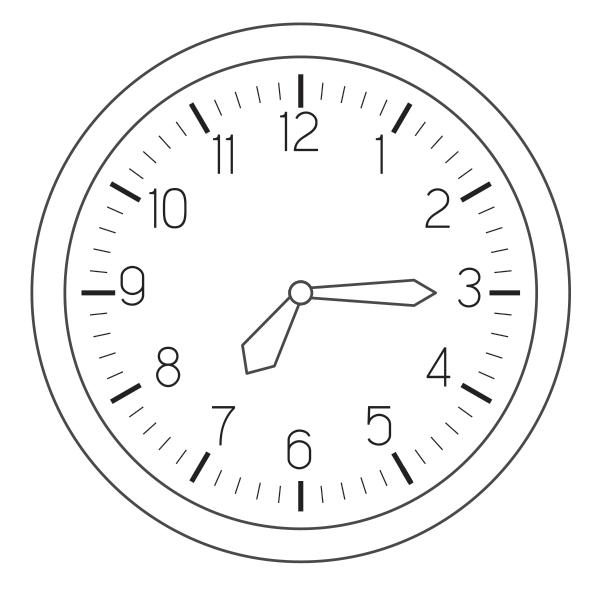

Match the pictures (A-G) with the correct sentences (1-6). Write your answers in the boxes. The first one (0) is an example. A B C D E

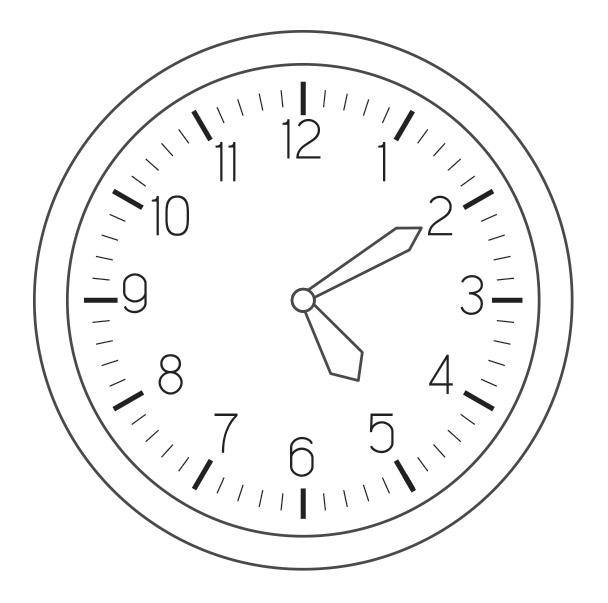


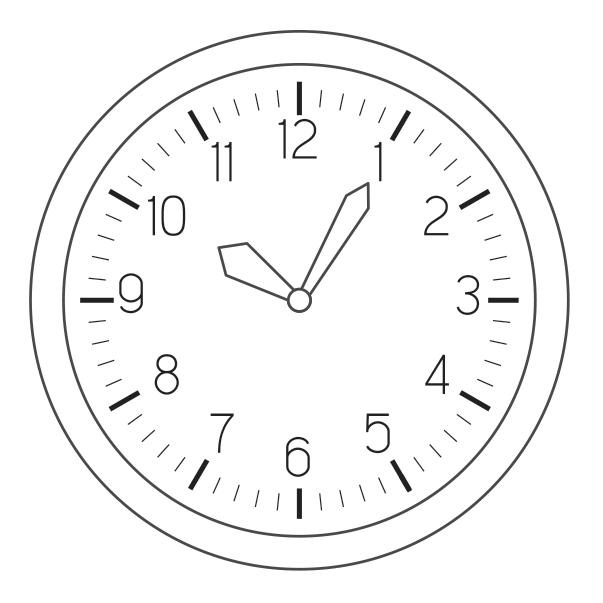
0 It’s a quarter past seven.
Q1 It’s open from eight A.M. to five P.M.
Q2 It’s five past ten.
Q3 The plane from Paris arrives at twenty-five past eight.
Q4 It’s ten past five.
Q5 For ten minutes and no more.
Q6 The plane for Paris leaves at a quarter past twelve.
Read the messages. Are the sentences (1-6) true, false or not given? Put a cross ( ) in the correct box. The first one (0) is an example.





Hi! I’m waiting for you... What are you doing?
I’m at Tina’s house... Why are you waiting for me? Sorry, I don’t remember...
MARY! Your dentist’s appointment is today at 5. Come here, NOW!
But I can’t! I’m drying my hair and we are getting ready for the party!
What party?
Dad, this evening... it’s Tina’s birthday party! Don’t you remember?
No, I don’t. Come here now, Mary! Or you can’t go anywhere.

Ok, ok... don’t get angry. I’m coming.
0 These are text messages.
Q1 Mary is preparing for a dentist’s appointment.
Q2 Dad is waiting for Mary.
Q3 Mary is preparing for Tina’s party.
Q4 The dentist’s appointment is at half past five.
Q5 Tina’s house is near the dental clinic.
Q6 Mary’s dad is angry.




Task 4
Read the text about family traditions. Answer the questions (1-5). Use a maximum of 4 words. Write your answers in the boxes. The first one (0) is an example.

My name’s Mark. I want to talk about our family traditions: things that we repeat and that are important for us. For example:
• Every evening, at dinner, everyone talks about positive and negative things about their day (TV, cellphones and tablets are not allowed).
• Pizza on Friday: each week, we make pizza together, everyone makes his own and decides what to put on top: tomatoes, onions, mozzarella, eggs, olives, cheese, etc.
• On the first day of every school year, Mum always takes our picture in front of the house. It’s fantastic for me and my sister to have one for each year in our special photo album!
0 Who’s writing? Mark.
Q1 Can they chat on Facebook during dinner?
Q2 On which day of the week does the family cook pizza?
Q3 Does Mark have a sister?
Q4 Where does Mum take a photo on the first day of every school year?
Q5 Is Mark happy to have a picture of every first day back at school?
FAI UNA
Task 5
Emma
Listen to a girl talking about herself. While listening, choose the correct answer (A, B, C or D) for questions 1-7. Put a cross ( ) in the correct box. Only one answer is correct. The first one (0) is an example. You will hear the recording twice. You will have 20 seconds at the end of the second recording to complete your answers. You now have 20 seconds to look at the task.
0. Emma’s mum and dad are from... Scotland. England. America. Ireland. A. B. C. D.
She has got... Q1. one sister. a sister and two brothers. a brother and a sister. no brothers or sisters.
A.
B. C. D. Oliver is her... Q2. dad. dog. A. B. cat. brother. C. D.
Every day after school, Emma...
Q3. goes to the swimming pool. does her homework. goes for a walk. plays basketball.
A. B. C. D.
Emma lives near... Q4. a school. a park.
A. B. a supermarket. a church. C. D.
On Sunday, Emma goes... Q5. to the gym. to the beach.
A. B. cycling. running. C. D.
On Sundays, Emma and Zoe have... Q6. an orange juice. an iced tea.
A. B. a coffee. something to eat. C. D.
Zoe wants to become a... Q7. chef. writer. A. B. nurse. teacher. C. D.
Task 6
Listen to a conversation between a man and someone who works at the cinema. While listening, complete the information below. Use a maximum of 4 words. Write your answers in the boxes. The first one (0) is an example. You will hear the recording twice. You will have 20 seconds at the end of the second recording to complete your answers.
You now have 20 seconds to look at the task.

Date: 19th July
Film: “ Show”
Screening:
2D 5:00, :30 3D 9:00
Number of tickets:
2 regular tickets
2 half-price tickets (4- years) complimentary ticket (0-3 years)
Family offer: free and drinks
Task 7
TRACK 15
Listen to some people talking about their favourite hobby. While listening, match the pictures (A-F) with the correct speaker (1-4). There is one picture that you do not need. The first one (0) is an example. You will hear the recording twice. You will have 20 seconds at the end of the second recording to complete your answers. You now have 20 seconds to look at the task.

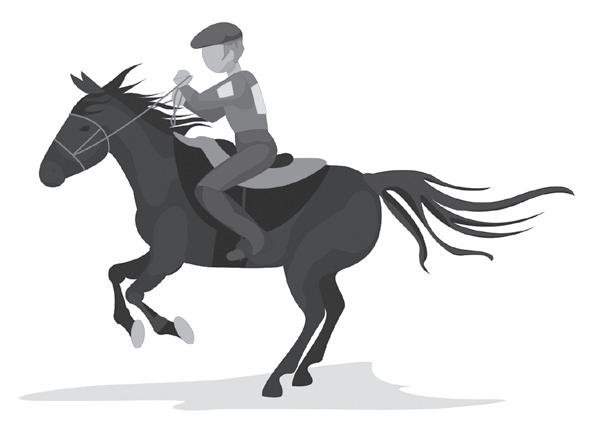




Task 8
Sophie
Listen to a girl talking about her favourite day. While listening, choose the correct answer (A, B, C or D) for questions 1-5.
Put a cross ( ) in the correct box. Only one answer is correct. The first one (0) is an example. You will hear the recording twice. You will have 20 seconds at the end of the second recording to complete your answers.
You now have 20 seconds to look at the task.
0. Sophie’s favourite day is...
Q1. most days. on Monday. on Thursday. with her dad.
Sophie goes to school by car...
A.
B.
C.
D. Monica is... Q2. younger than Sophie. older than Sophie. the same age as Sophie. Sophie’s sister.
A. B. C. D. Friday. Tuesday. Monday. Thursday. A. B. C. D.
On Saturday, Sophie... Q3. does her homework. eats at Monica’s house. plays football. walks to school.
A.
B.
C.
D.
Monica and Sophie like to... Q4. go running. play computer games. do yoga. go to the beach.
A.
B.
C.
D.
When Sophie’s mum finishes work, she is... Q5. happy. tired. sad. angry.
A.
B.
C.
D.
Barra con una x i quesiti a cui hai risposto correttamente.
Task 1 Q1 Q2 Q3 Q4 Q5 Task 2 Q1 Q2 Q3 Q4 Q5 Q6 Task 3 Q1 Q2 Q3 Q4 Q5 Q6 Task 4 Q1 Q2 Q3 Q4 Q5 Task 5 Q1 Q2 Q3 Q4 Q5
Q1 Q2 Q3 Q4 Q5
Ora osserva le tabelle e rispondi:
- hai risposto correttamente alla maggior parte dei quesiti? SÌ NO - quanti punti hai totalizzato sul totale? /45 - come hai trovato questa prova? Barra la faccina corrispondente.



Rilevazione degli apprendimenti
PROVA UFFICIALE N. 1
Data:

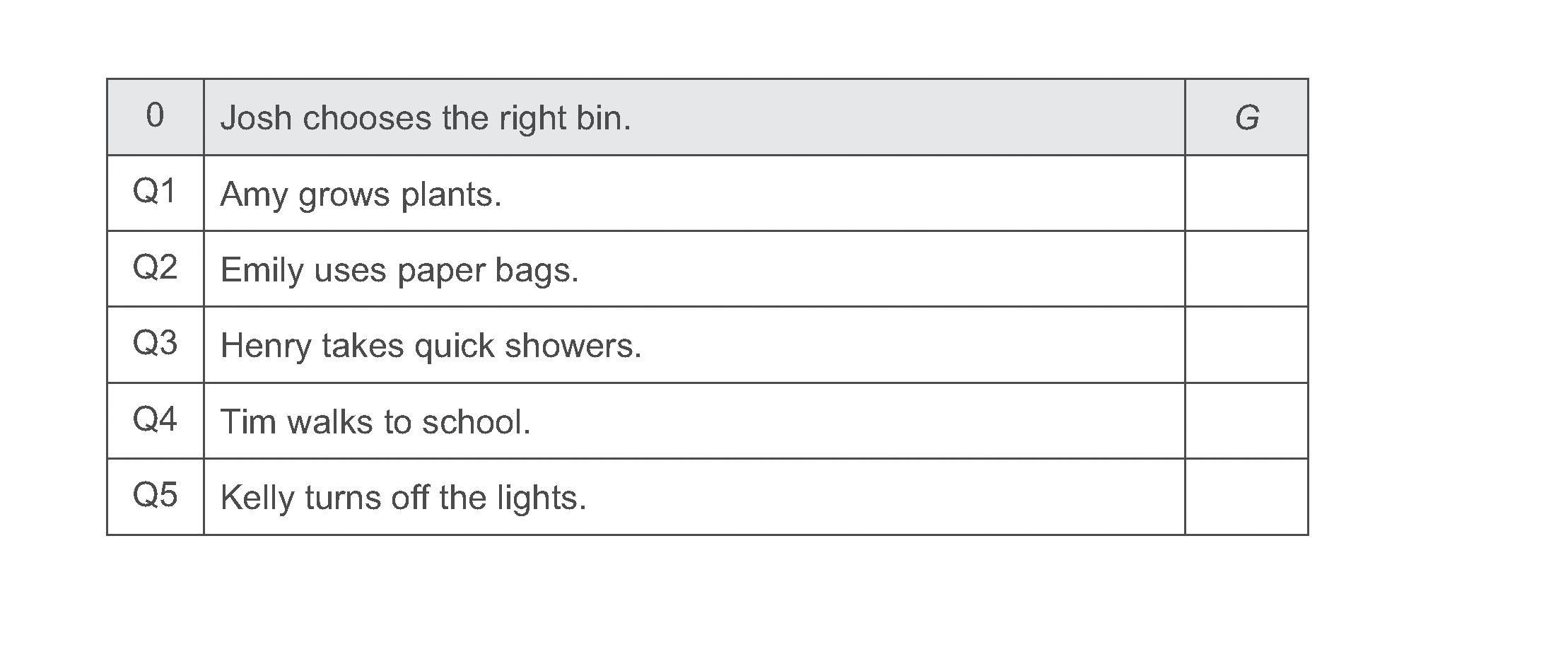


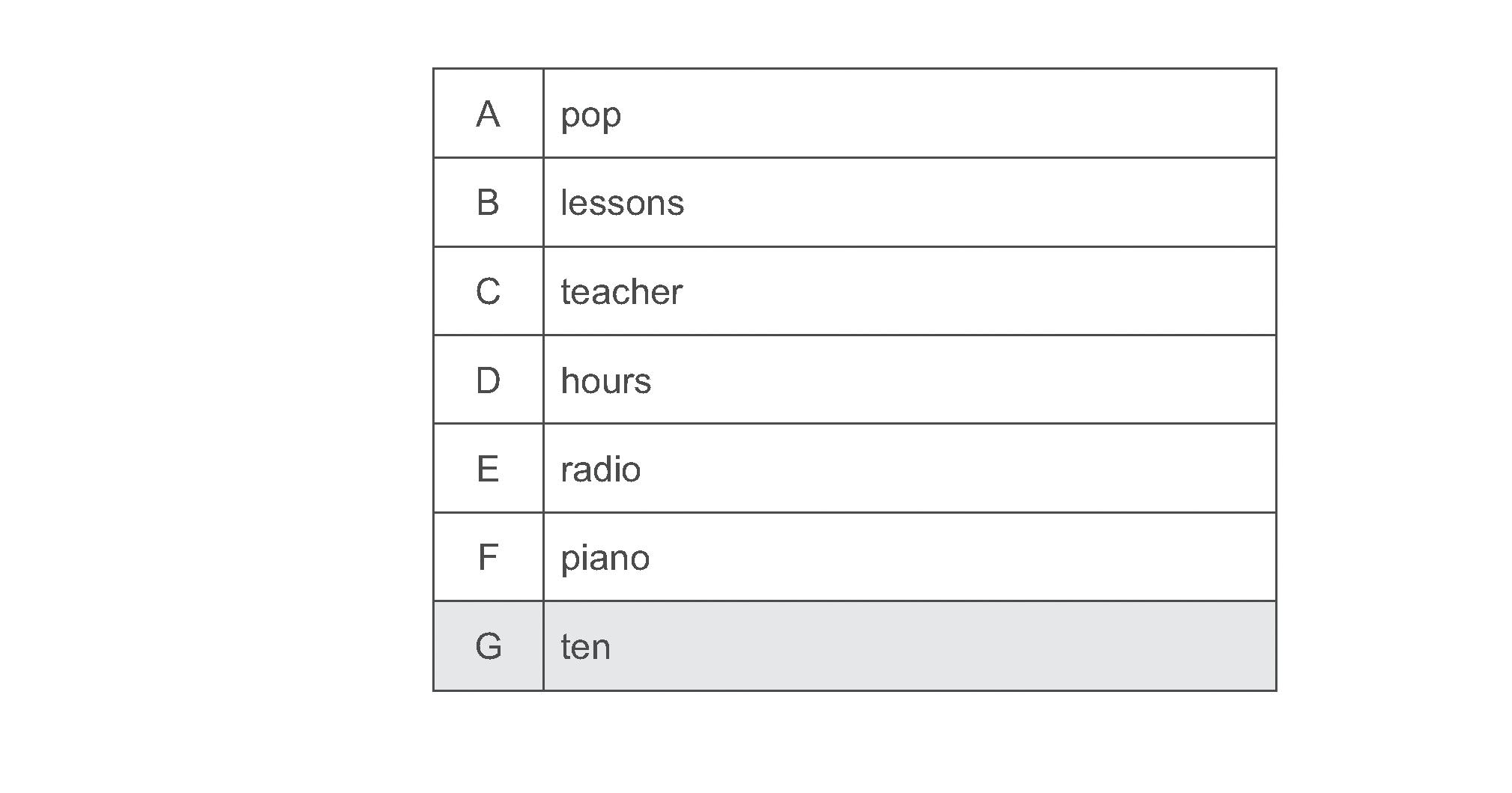
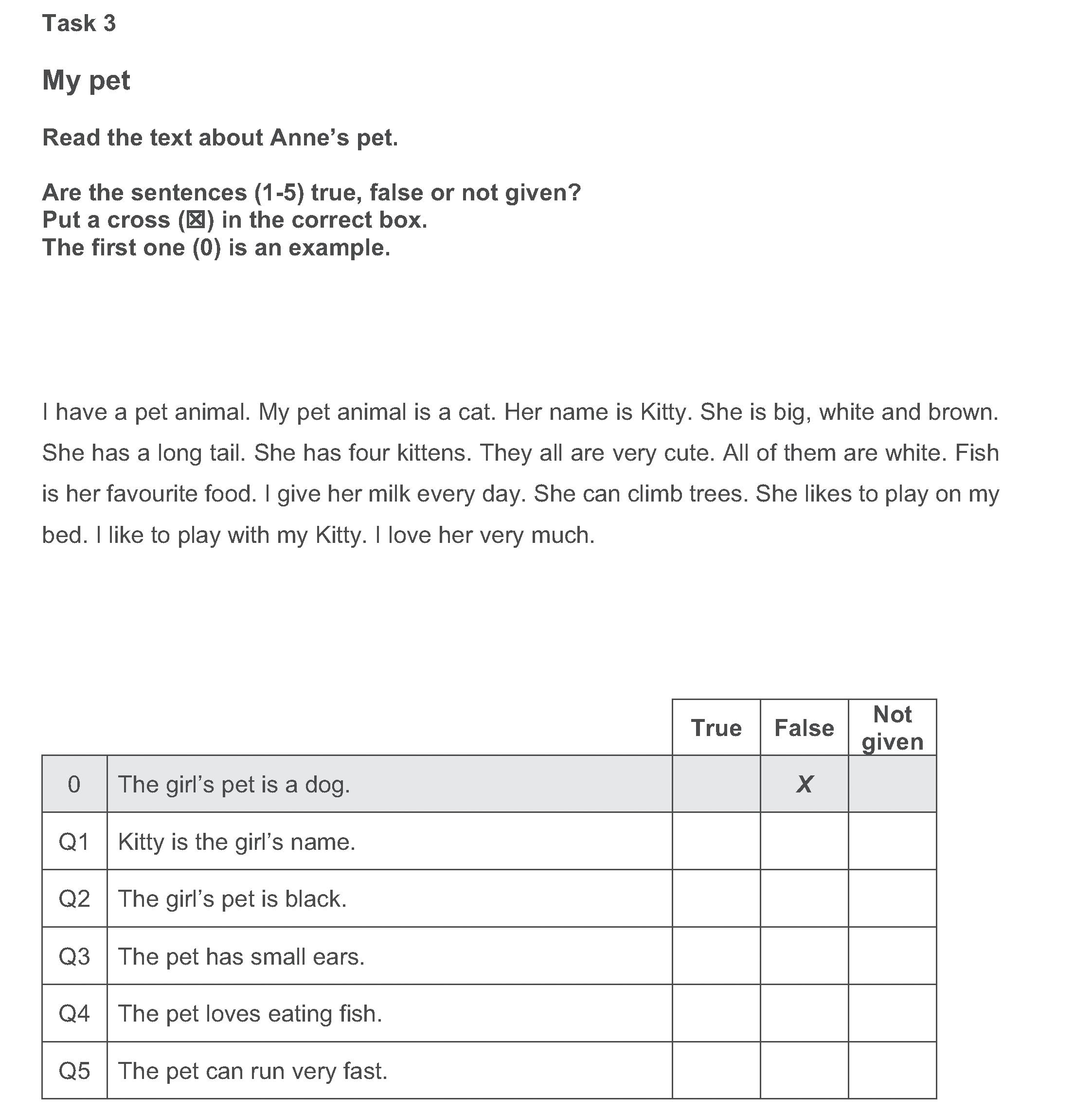
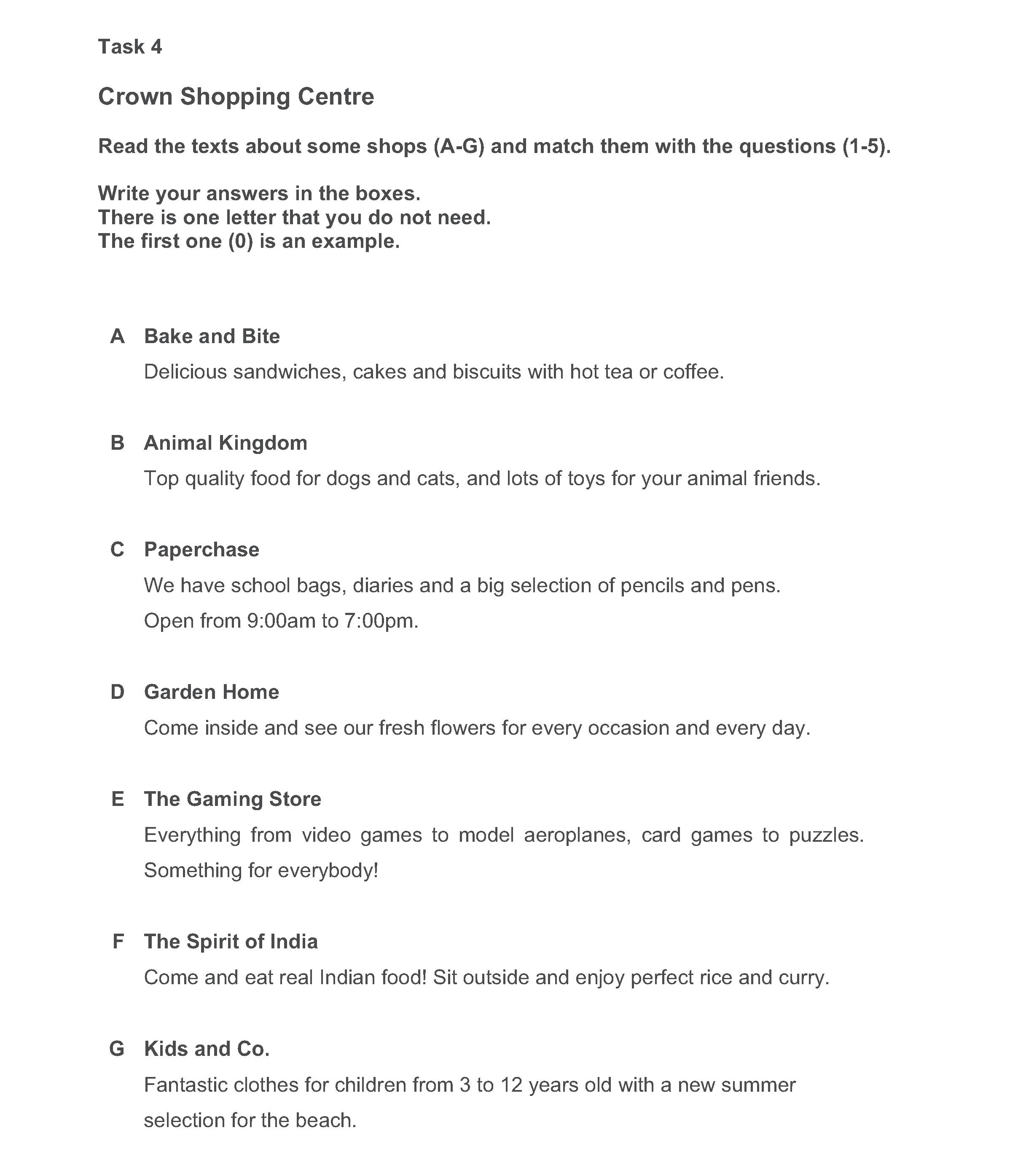






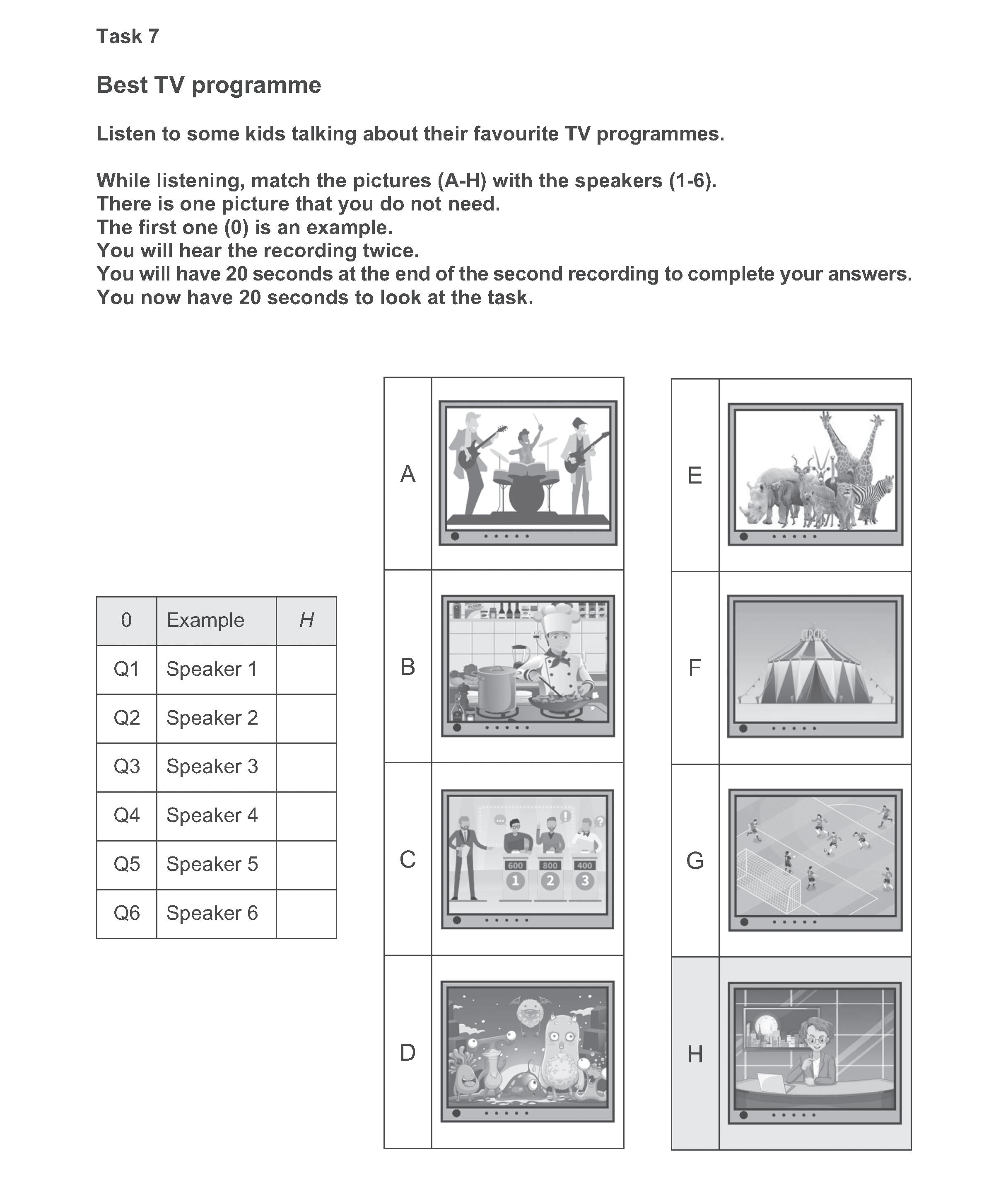
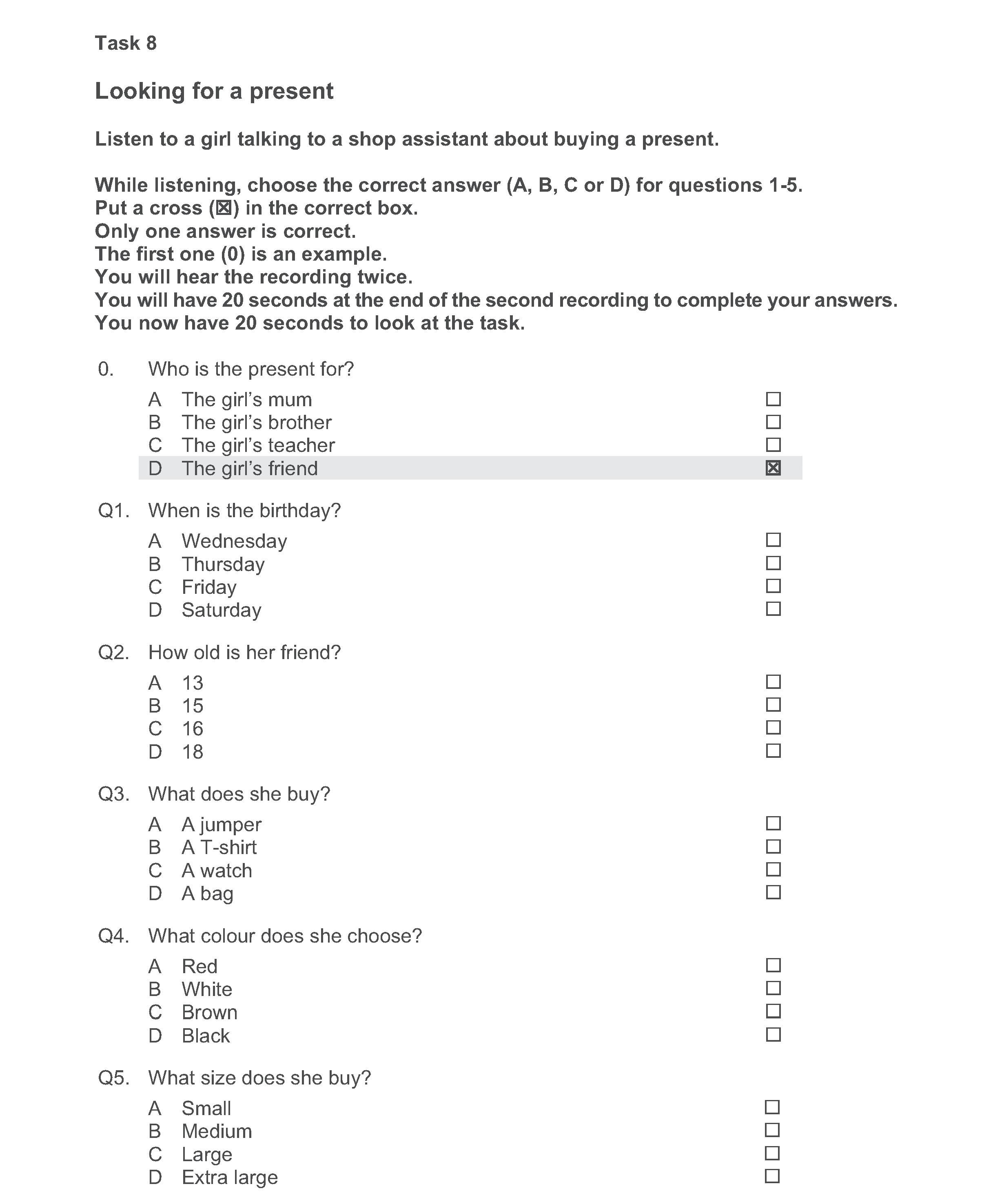


Barra con una x i quesiti a cui hai risposto correttamente.
Task 1 Q1 Q2 Q3 Q4 Q5
Task 2 Q1 Q2 Q3 Q4 Q5
Task 3 Q1 Q2 Q3 Q4 Q5
Task 4 Q1 Q2 Q3 Q4 Q5
Task 5 Q1 Q2 Q3 Q4 Q5 Q6
Task 7 Q1 Q2 Q3 Q4 Q5 Q6
Task 6 Q1 Q2 Q3 Q4 Q5 Task 8 Q1 Q2 Q3 Q4 Q5
Task 9 Q1 Q2 Q3 Q4 Q5
Task 10 Q1 Q2 Q3 Q4 Q5 Q6
Ora osserva le tabelle e rispondi:
- hai risposto correttamente alla maggior parte dei quesiti? SÌ NO - quanti punti hai totalizzato sul totale? /53
- come hai trovato questa prova? Barra la faccina corrispondente.



Rilevazione degli apprendimenti
Classe quinta
Data:


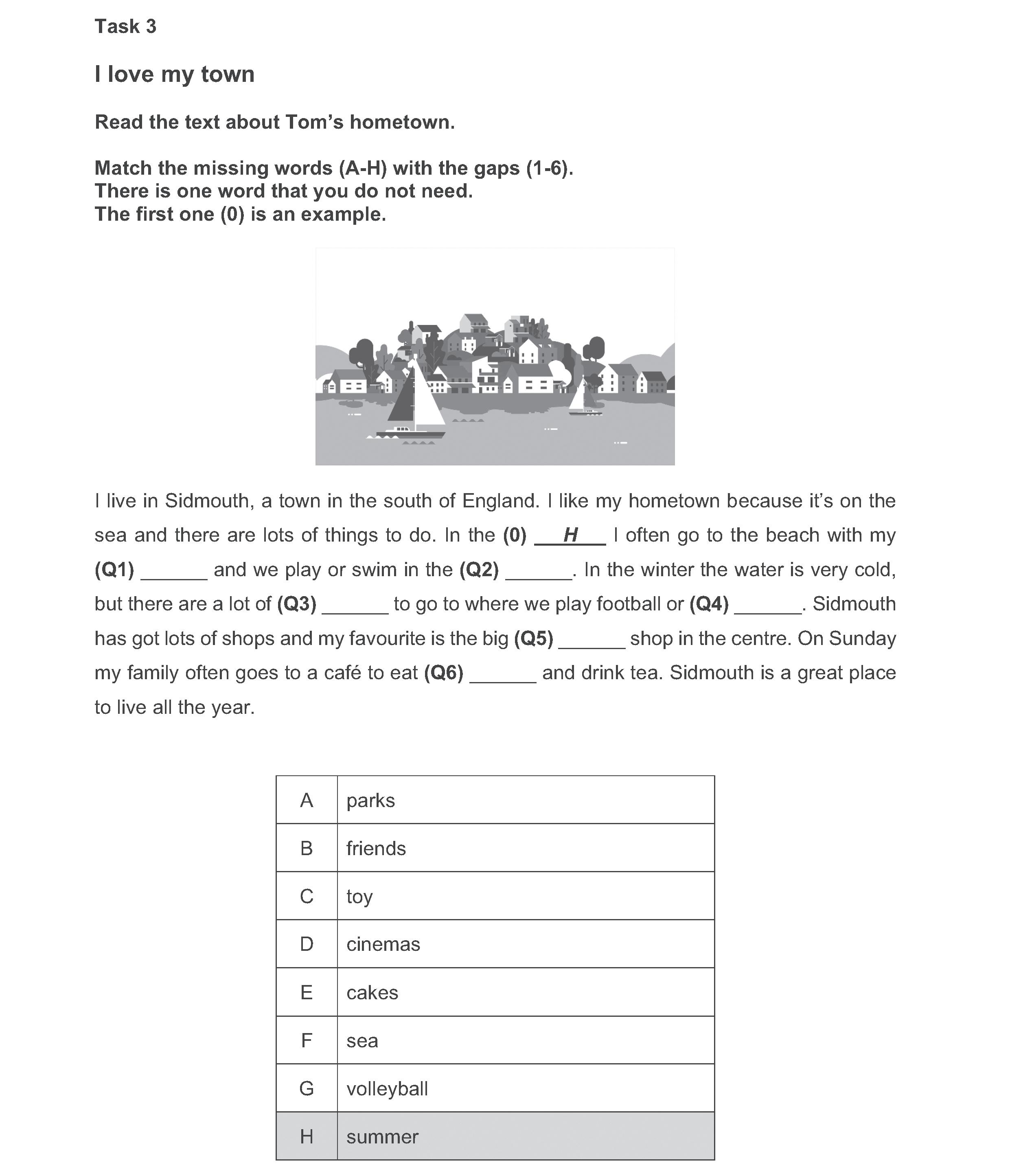
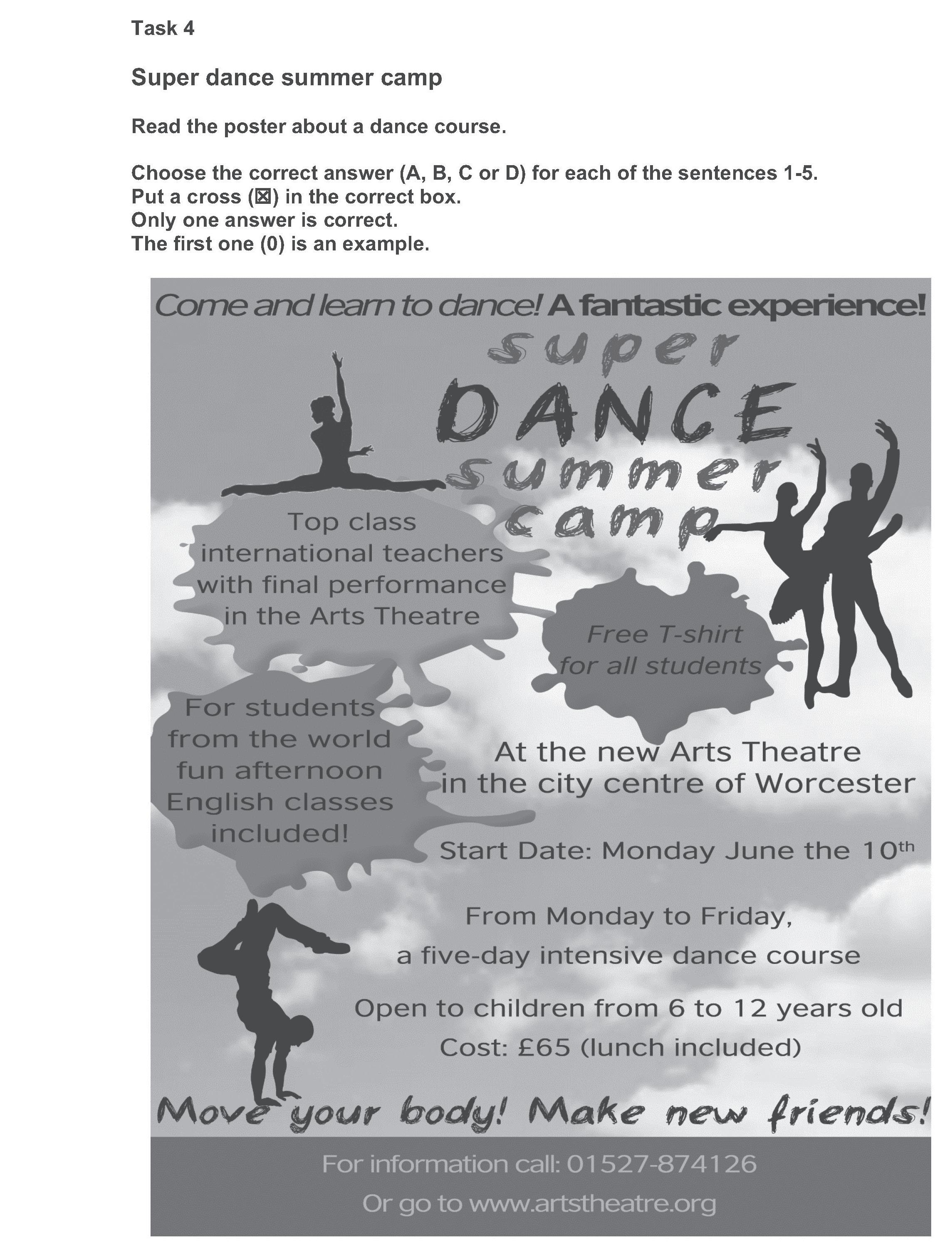

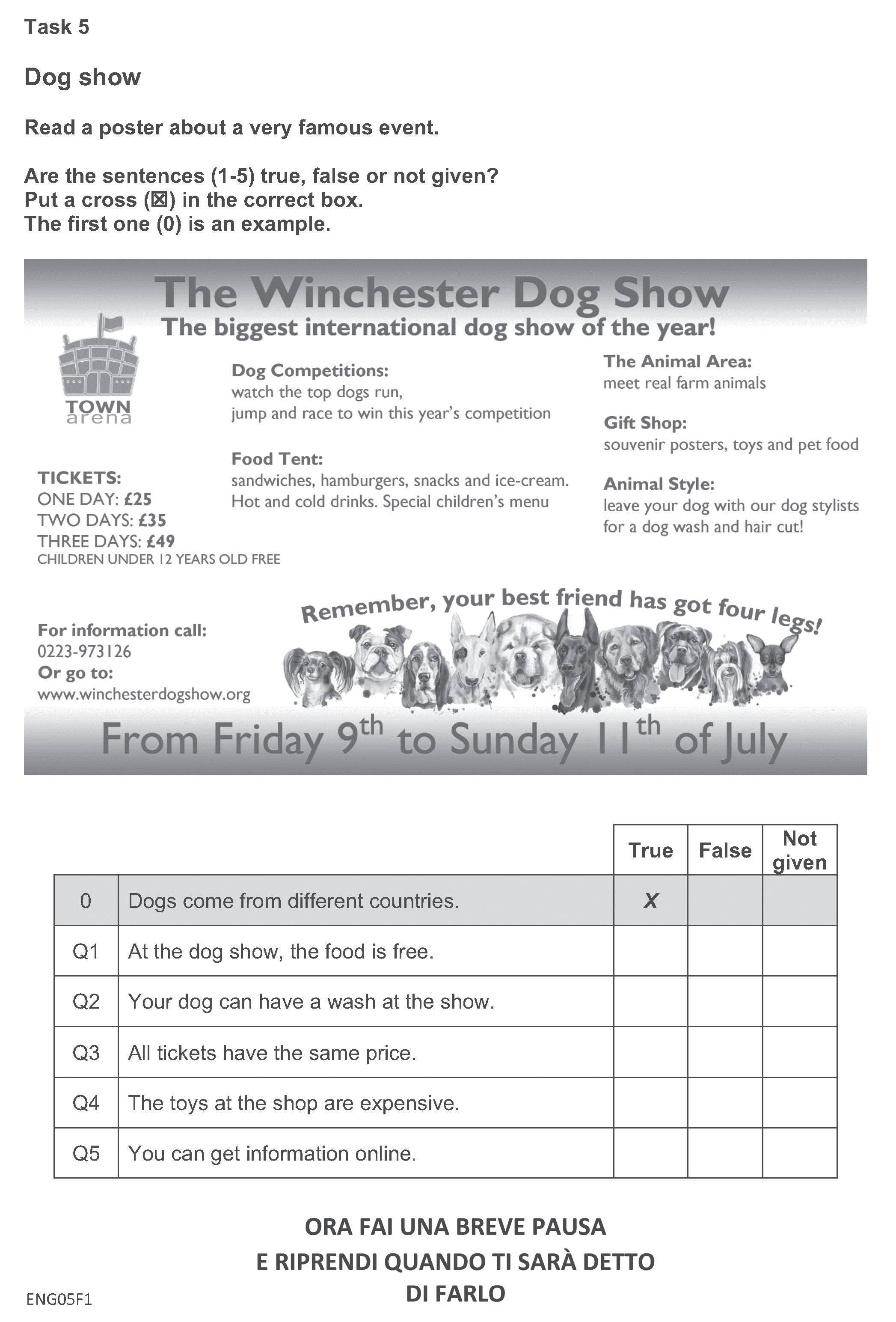
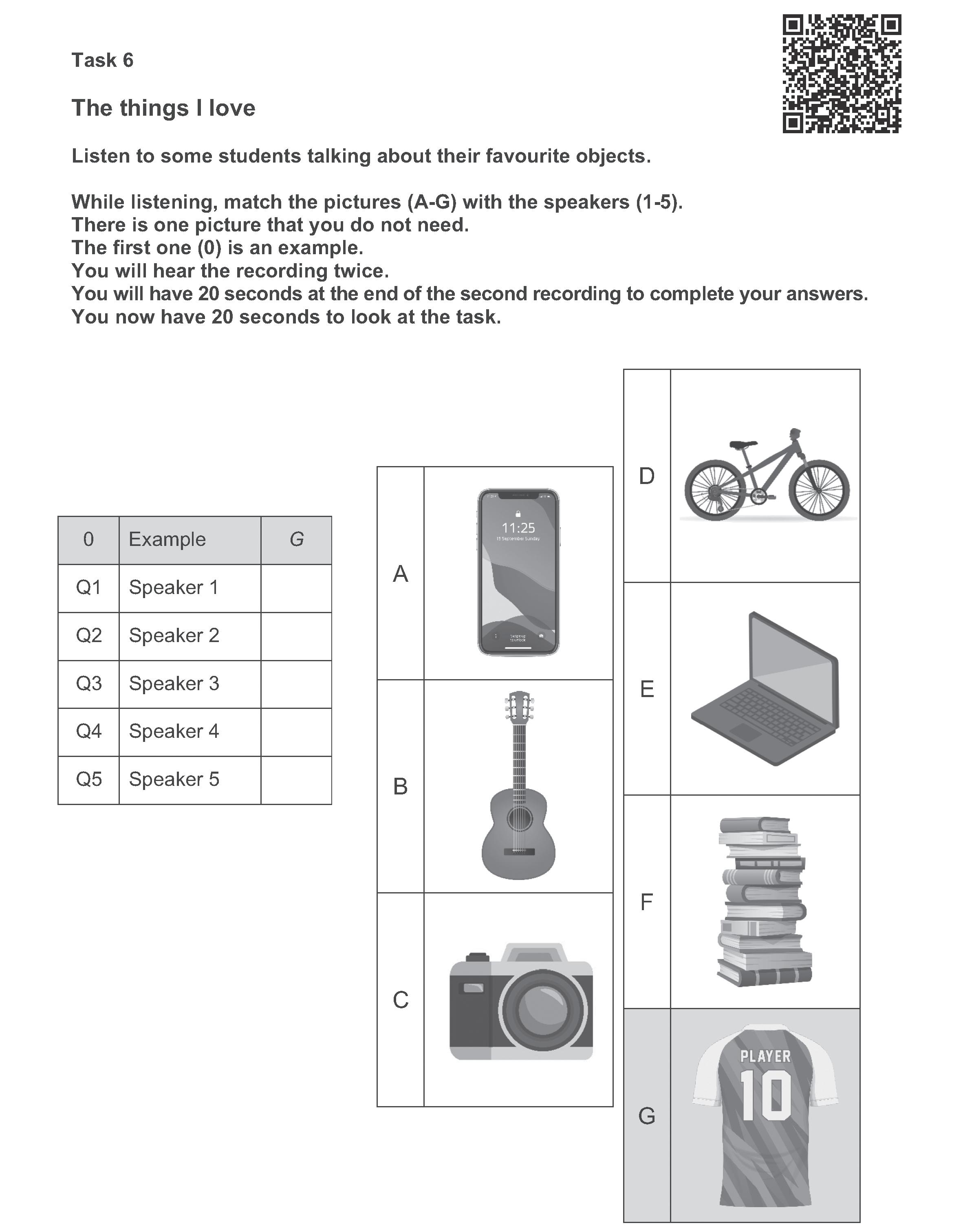
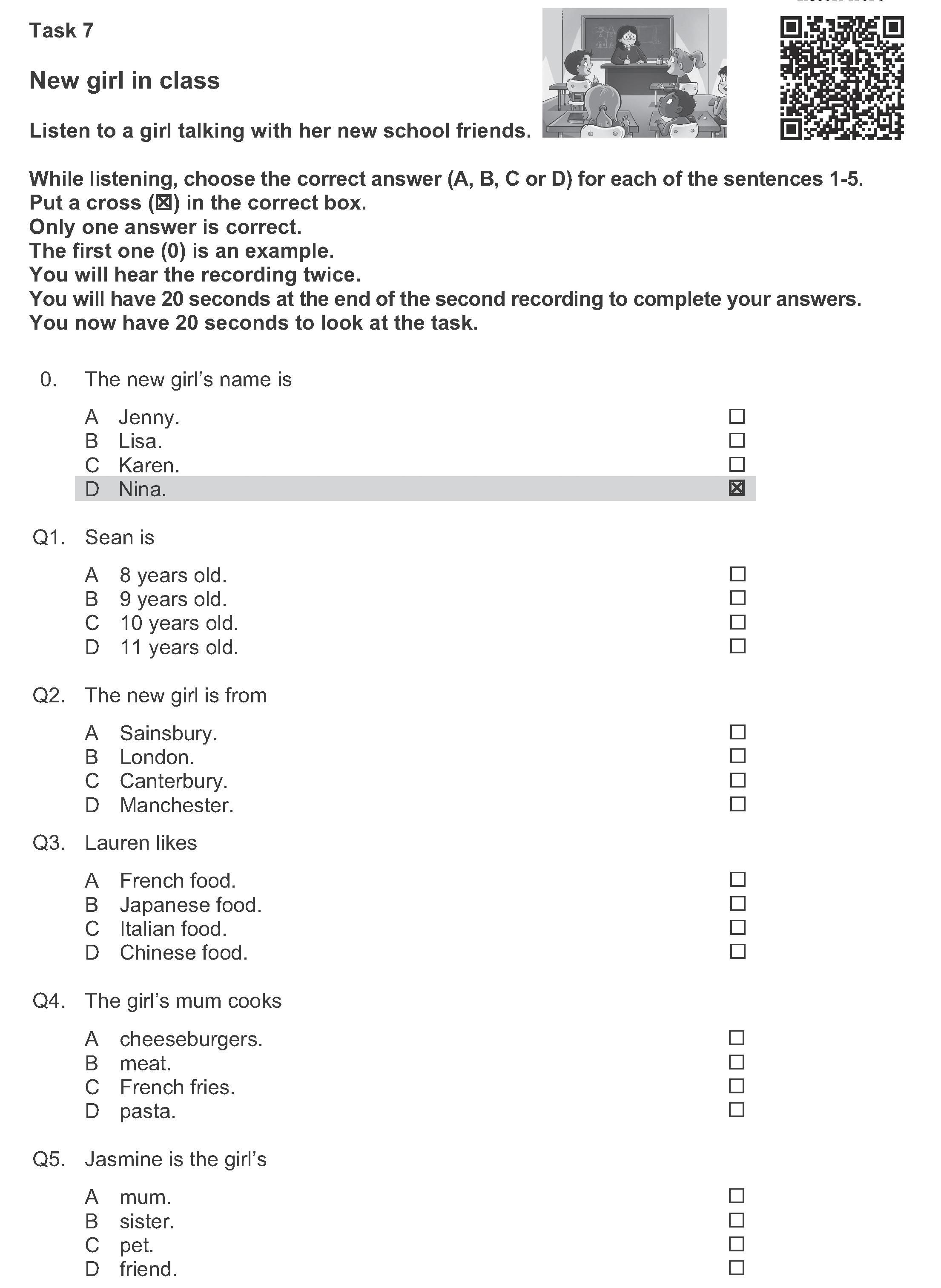


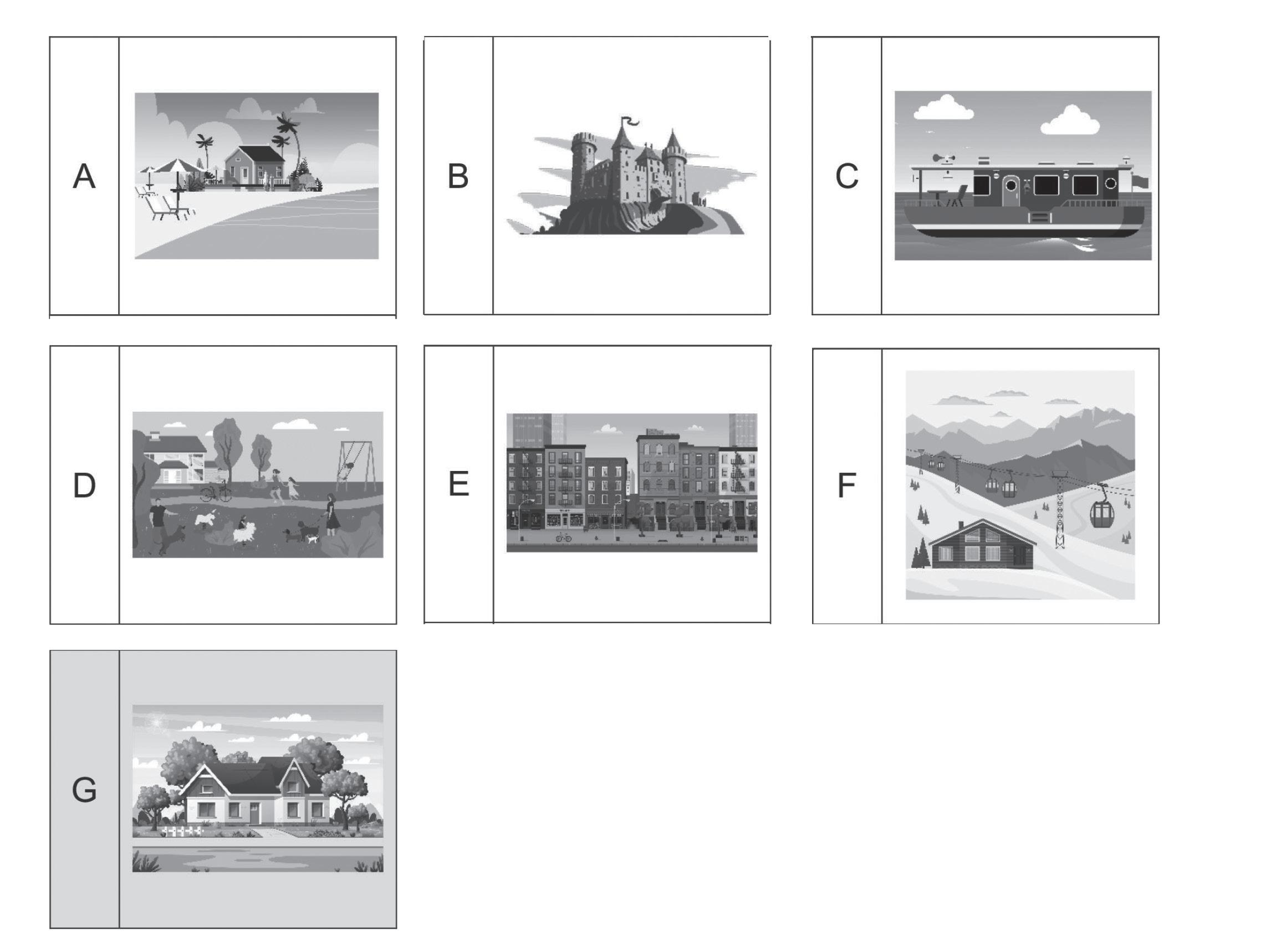







Barra con una x i quesiti a cui hai risposto correttamente.
Task 1 Q1 Q2 Q3 Q4 Q5
Task 2 Q1 Q2 Q3 Q4 Q5 Q6
Task 6 Q1 Q2 Q3 Q4 Q5
Task 7 Q1 Q2 Q3 Q4 Q5
Task 3 Q1 Q2 Q3 Q4 Q5 Q6 Task 8 Q1 Q2 Q3 Q4 Q5 Q6
Task 4 Q1 Q2 Q3 Q4 Q5
Task 5 Q1 Q2 Q3 Q4 Q5
Task 9 Q1 Q2 Q3 Q4 Q5 Task 10 Q1 Q2 Q3 Q4 Q5
Ora osserva le tabelle e rispondi: - hai risposto correttamente alla maggior parte dei quesiti? SÌ NO - quanti punti hai totalizzato sul totale? /53 - come hai trovato questa prova? Barra la faccina corrispondente.


Data:

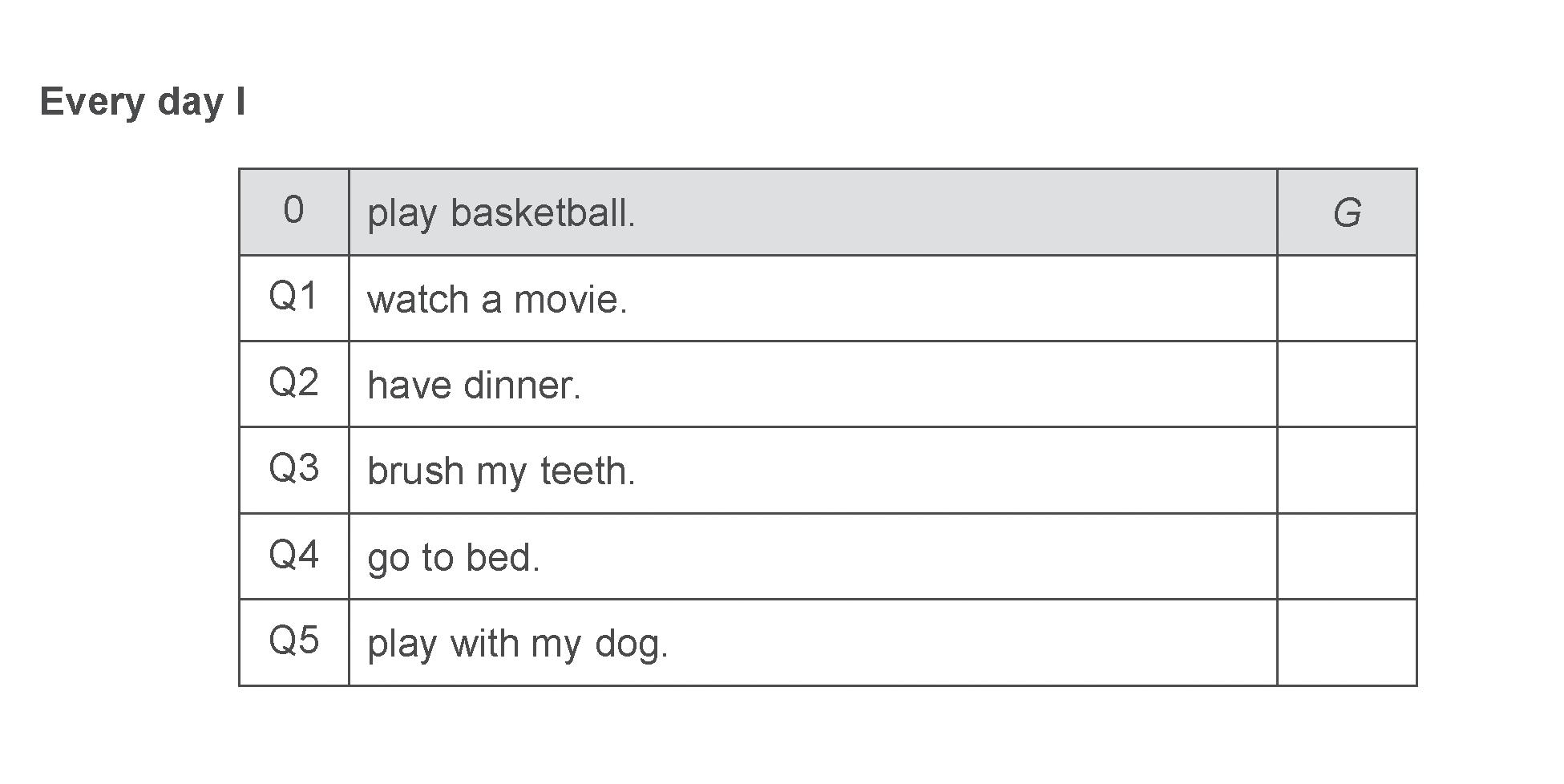



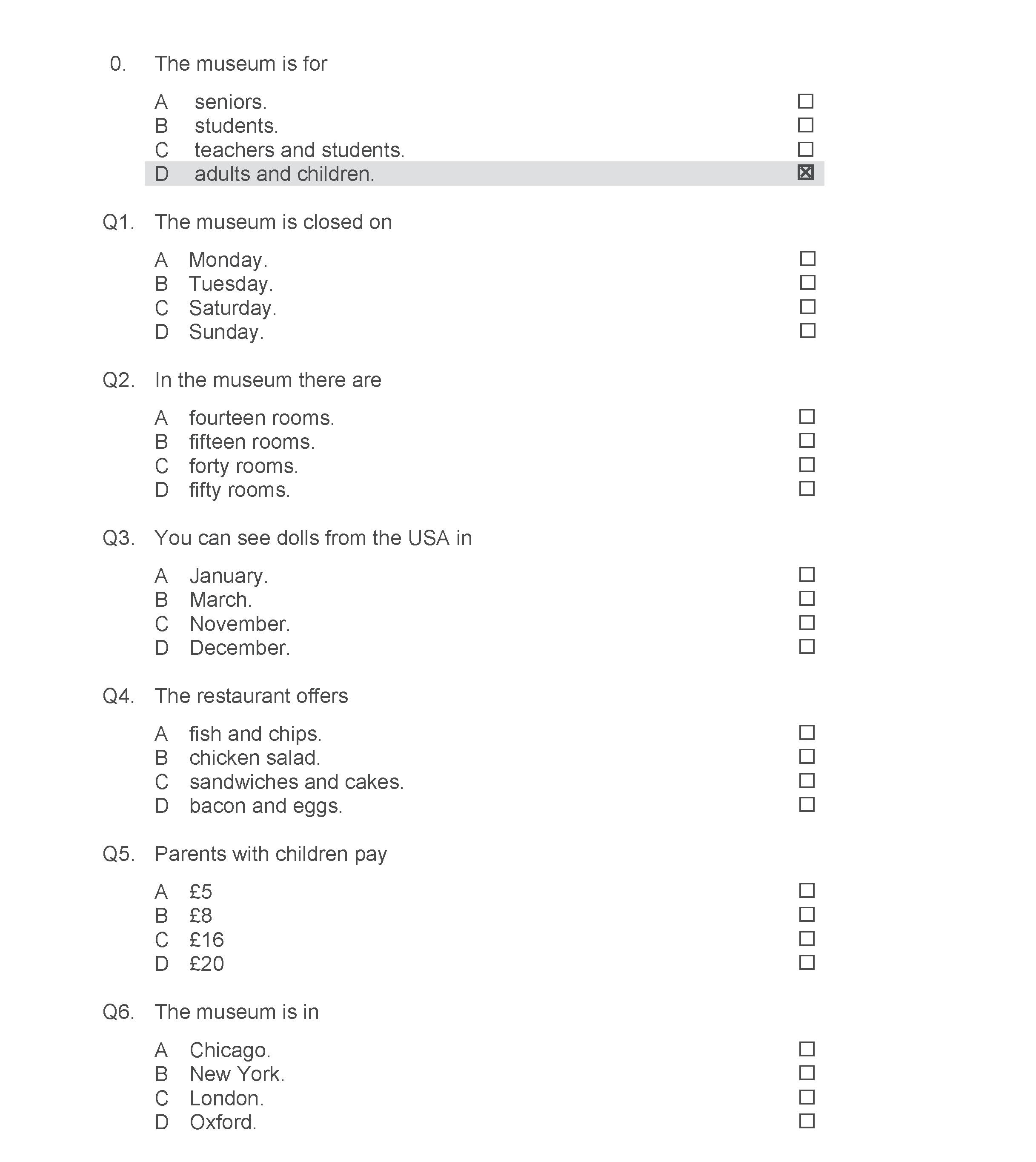
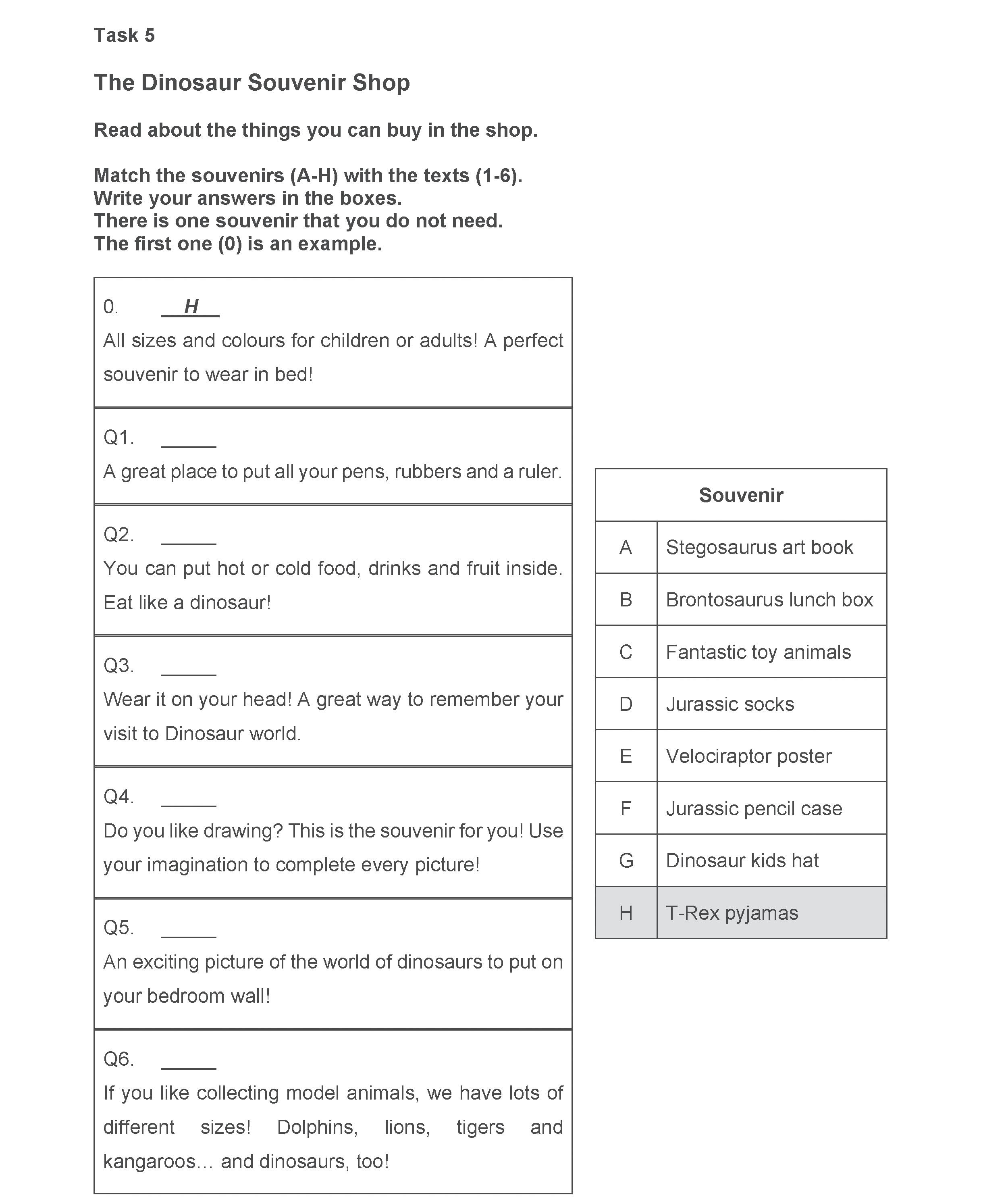
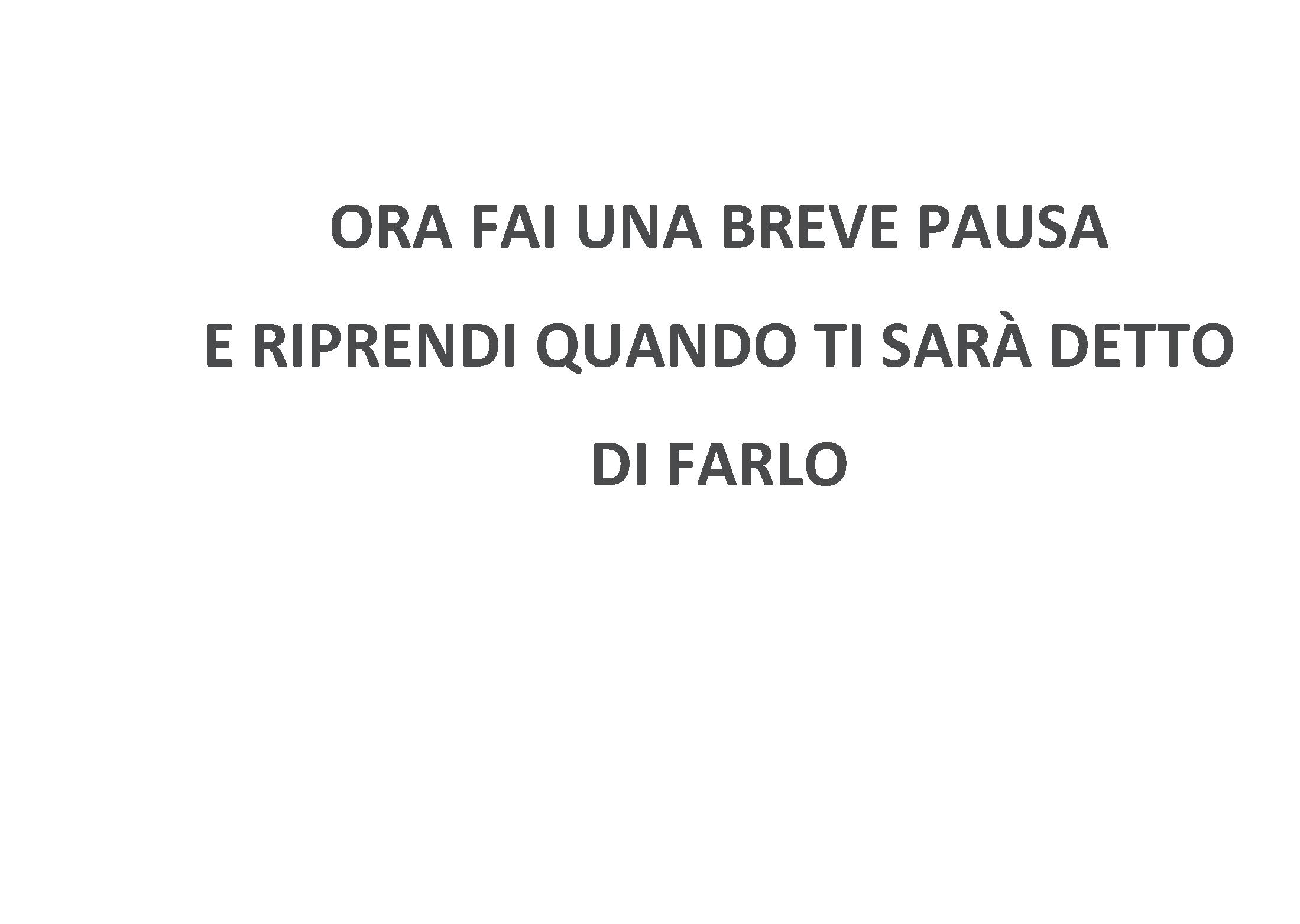


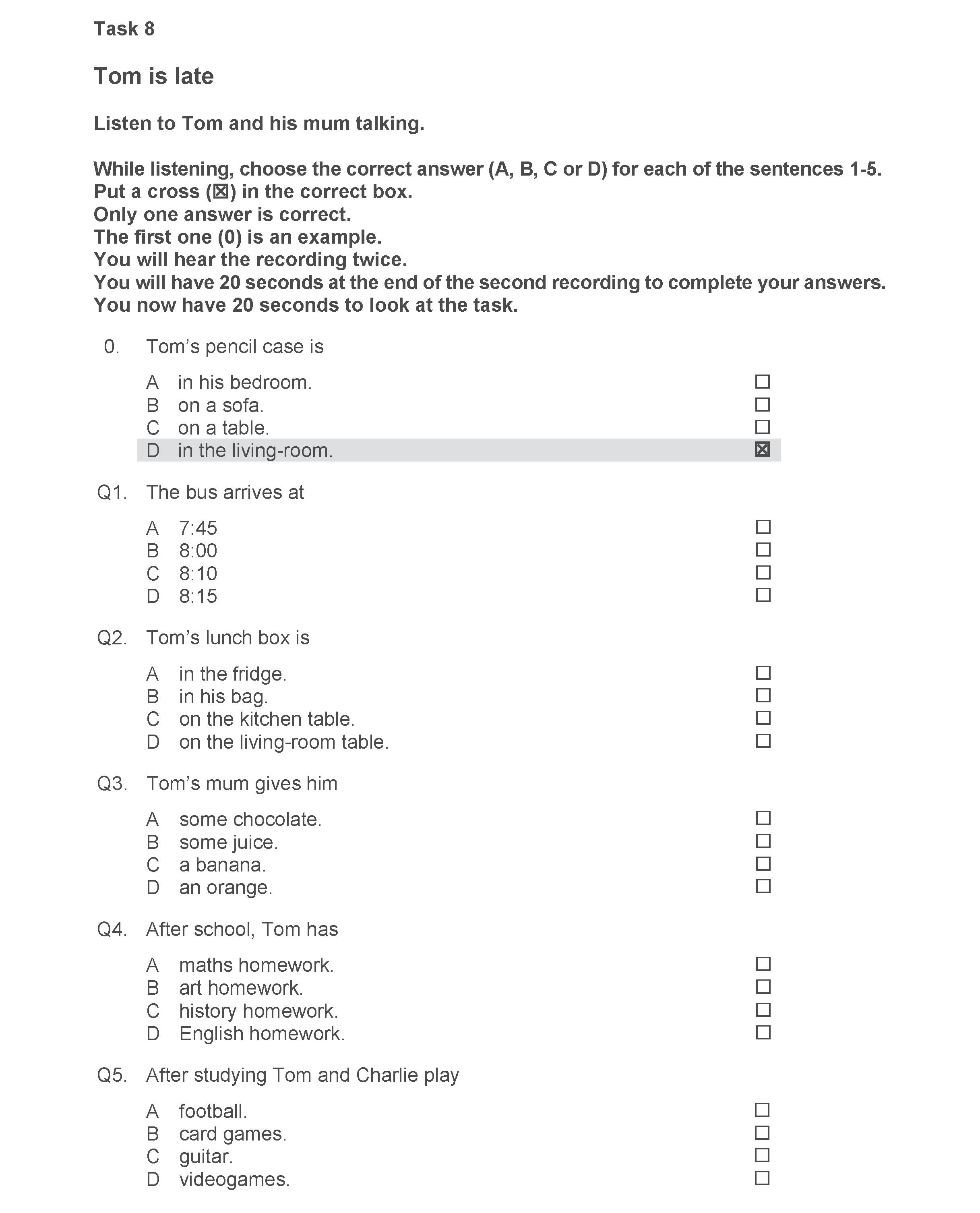

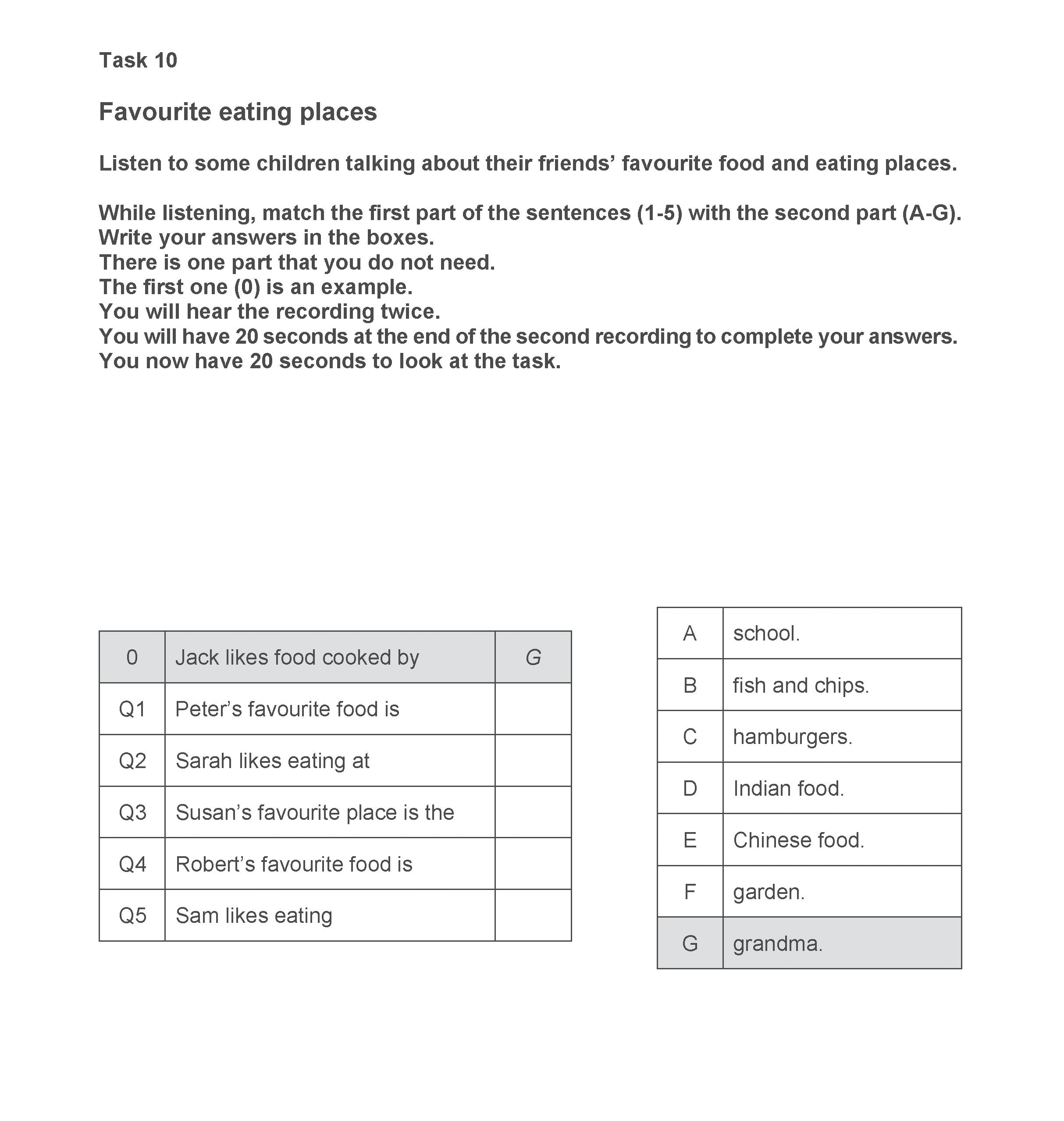
Barra con una x i quesiti a cui hai risposto correttamente.
Task 1 Q1 Q2 Q3 Q4 Q5 Task 2 Q1 Q2 Q3 Q4 Q5 Q6 Task 6 Q1 Q2 Q3 Q4 Q5 Q6
Task 5 Q1 Q2 Q3 Q4 Q5 Q6 Task 7 Q1 Q2 Q3 Q4 Q5 Task 10 Q1 Q2 Q3 Q4 Q5 Task 8 Q1 Q2 Q3 Q4 Q5
Task 3 Q1 Q2 Q3 Q4 Q5 Q6 Task 4 Q1 Q2 Q3 Q4 Q5 Q6 Task 9 Q1 Q2 Q3 Q4 Q5 Q6
Ora osserva le tabelle e rispondi: - hai risposto correttamente alla maggior parte dei quesiti? SÌ NO - quanti punti hai totalizzato sul totale? /56 - come hai trovato questa prova? Barra la faccina corrispondente.

Pronomi / aggettivi
Parole interrogative
There is / T here are
How much? / How many?
Preposizioni di tempo
What time
it? To
What...?
I you he she it we they my your his her its our their
Which...?
When...?
Who...?
Where...?
How old...?
Che cosa...? Quale...? (Se la scelta è fra molte cose)
Quale...? (Scelta limitata tra poche cose)
Quando...?
Chi...?
Dove...?
Quanti anni...?
What’s your name?
Which is your favourite colour?
When is your birthday?
Who is your best friend?
Where is my book? How old is Tony?
SINGOLARE
There’s (There is)
There isn’t (There is not) Is there...?
PLURALE
There are
CORRISPONDE A...
ESEMPI
There aren’t (There are not) Are there...?
Quanto? Quanta?
Con i sostantivi non numerabili
How much milk is there in the fridge?
How much chocolate do you eat every day?
Quanti? Quante?
Con i sostantivi numerabili al plurale
How many eggs are there in the fridge?
How many bananas do you eat every day?
• le parti del giorno
• i mesi
• le stagioni
• gli anni
• i giorni
• le date
• le ore del giorno
• i pasti
• I go to school in the morning.
• School starts on September 14th.
• The lesson starts at nine.
It’s MINUTES to HOUR
TO quarter to quarter past o’ clock half past PAST five past five to ten past ten to twenty to twenty-five to twenty-five past twenty past
It’s MINUTES past HOUR
I’m (I am) you’re (you are) he/she/it’s (he/she/it is) we’re (we are) they’re (they are)
I’m not you’re not he/she/it’s not we’re not they’re not (I am not) (you are not) (he/she/it is not) (we are not) (they are not)
Am I...? Are you...? Is he/she/it...? Are we...? Are they...?
Yes, I am Yes, you are Yes, he/she/it is Yes, we are Yes, they are No, I’m not No, you’re not No, he/she/it’s not No, we’re not No, they’re not
I’ve got you’ve got he/she/it’s got we’ve got they’ve got (have got) (have got) (has got) (have got) (have got)
I you he/she/it we they haven’t got haven’t got hasn’t got haven’t got haven’t got (have not got) (have not got) (has not got) (have not got) (have not got)
Have I got...?
Have you got...? Has he/she/it got...?
Have we got...?
Have they got...?
Yes, I have Yes, you have Yes, he/she/it has Yes, we have Yes, they have
No, I haven’t No, you haven’t No, he/she/it hasn’t No, we haven’t No, they haven’t
PRESENT SIMPLE
FORMA AFFERMATIVA
I you he/she/it we they read read reads read read
PRESENT SIMPLE
FORMA NEGATIVA
I don’t read you don’t read he/she/it doesn’t read we don’t read they don’t read
PRESENT SIMPLE
FORMA INTERROGATIVA
Do I read...?
Do you read...? Does he/she/it read...? Do we read...? Do they read...?
PRESENT CONTINUOUS
FORMA AFFERMATIVA
I’m reading you’re reading he/she/it’s reading we’re reading they’re reading
PRESENT CONTINUOUS
FORMA NEGATIVA
I’m not reading you aren’t reading he/she/it isn’t reading we aren’t reading they aren’t reading
PRESENT CONTINUOUS
FORMA INTERROGATIVA
Am I reading...?
Are you reading...? Is he/she/it reading...?
Are we reading...? Are they reading...?
I like you like he/she/it likes we like they like
Do I like...? Do you like...? Does he/she/it like...? Do we like...? Do they like...?
I you he/she/it we they don’t like don’t like doesn’t like don’t like don’t like
Yes, I do Yes, you do Yes, he/she/it does Yes, we do Yes, they do
No, I don’t No, you don’t No, he/she/it doesn’t No, we don’t No, they don’t
I can you can he/she/it can we can they can I you he/she/it we they can’t can’t can’t can’t can’t
Can I...?
Can you...?
Can he/she/it...?
Can we...?
Can they...?
Yes, I can Yes, you can Yes, he/she/it can Yes, we can Yes, they can
No, I can’t No, you can’t No, he/she/it can’t No, we can’t No, they can’t
I (don’t) get up: (non) mi alzo
I wash my face: mi lavo la faccia
I take off (my pyjamas): mi tolgo il pigiama
I put on my clothes: mi vesto
I have breakfast: faccio colazione
I brush my teeth: mi lavo i denti
I comb my hair: mi pettino i capelli
I put on my shoes: mi metto le scarpe
I go to school: vado a scuola
I read: leggo
I write: scrivo
I listen to the teacher: ascolto l’insegnante
I have lunch: pranzo
I go home: vado a casa with my family: con la mia famiglia with my friends: con i miei amici on foot: a piedi by bus: in autobus by car: con l’auto
I do my homework: faccio i compiti
I have a snack: faccio uno spuntino
I play with my friends: gioco con gli amici
I use the computer: utilizzo il computer
I have dinner: ceno
I study: studio
I watch TV: guardo la TV
I take off my clothes: mi spoglio
I put on my pyjamas: mi metto il pigiama
I go to bed: vado a letto at school: a scuola at home: a casa in the kitchen: in cucina in the canteen: alla mensa in the morning: di mattina in the afternoon: nel pomeriggio in the evening: di sera at midday: a mezzogiorno at night: di notte
a doctor: dottore/dottoressa
a police officer: poliziotto/poliziotta
a plumber: idraulico
a secretary: segretario/segretaria
a clerk: impiegato/impiegata
an actor/actress: attore/attrice
a housewife: casalinga
a househusband: casalingo
a mechanic: meccanico
a nurse: infermiere/infermiera
a factory worker: operaio/operaia
a hairdresser: parrucchiere/parrucchiera
a waiter/waitress: cameriere/cameriera
a pilot: pilota
a farmer: contadino/contadina
a singer: cantante
He’s looking for a job: lui cerca lavoro
She’s retired: lei è in pensione
mother-mummy/mum/mom: madre
father-daddy/dad: padre
brother: fratello
sister: sorella
grandfather-granddad/grandpa: nonno
grandmother-grandma/granny: nonna
cousin: cugino/cugina
uncle: zio
aunt: zia
parents: genitori
brothers and sisters: fratelli
grandparents: nonni







John is Sally’s father.
Mary is Sally’s mother.
Sally and Henry are brother and sister.
Sally is Tom’s mother.
Fred is Tom’s father.
John and Mary are Tom’s grandparents.
Henry is Tom’s uncle.
Ann is Tom’s aunt.
Tom and Verity are cousins.
apple: mela
plum: prugna
peach: pesca
cherry: ciliegia
FRUTTA E VERDURA
pear: pera
mandarin: mandarino
apricot: albicocca
banana: banana
garlic: aglio
aubergine: melanzana
pepper: peperone
courgette: zucchina

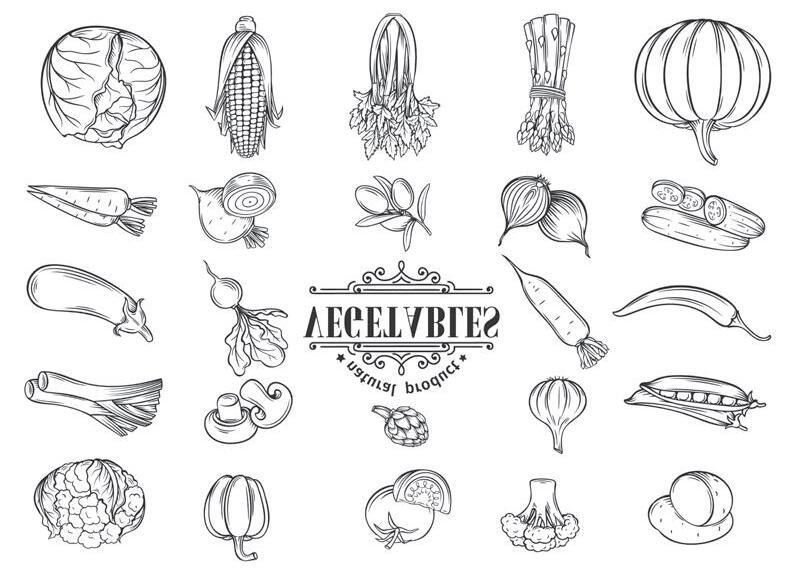
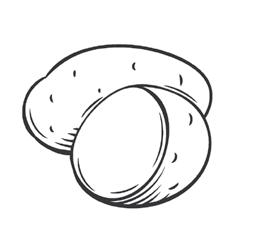




a bowl of cereal:
a piece of toast: tostato
jam: marmellata
butter: burro

some biscuits: qualche biscotto
a piece of cake: un pezzo di torta
a glass of milk: un bicchiere di latte
a cup of tea: una tazza di tè
a glass of juice: un bicchiere di succo di frutta
pizza: pizza
chips: patatine fritte
spaghetti: spaghetti
meat: carne
hamburger: hamburger
hot dog: hot dog
bread: pane
salad: insalata
rice: riso
soup: zuppa
crisps: patatine
snack: merendina
at a quarter to 8: alle 8 meno un quarto at a quarter past 8: alle 8 e un quarto
at half past 9: alle 9 e mezza at 9 o’clock: alle 9 in punto
to swim: nuotare to run: correre to dance: ballare to sing: cantare to skate: pattinare to ski: sciare
to jump: saltare
to ice skate: pattinare sul ghiaccio
to cook: cucinare
tennis: tennis
football: calcio
geography: geografia history: storia science: scienze
art: arte
ice hockey: hockey su ghiaccio
basketball: pallacanestro
volleyball: pallavolo
golf: golf
music: musica
physical education (PE): educazione fisica
maths: matematica
information and communications technology (ICT): informatica
bed: letto
wardrobe: guardaroba
bedside table: comodino
sofa: divano
armchair: poltrona bookcase: libreria
fireplace: camino toilet: toilette
washbasin: lavandino bath: vasca da bagno
midnight: mezzanotte midday: mezzogiorno
piano: pianoforte
guitar: chitarra
recorder: flauto
dolce
drums: batteria
clarinet: clarinetto
Italian: italiano
English: inglese
French: francese
religious education (RE): religione
shower: doccia
cooker: forno/fornelli
fridge: frigo
sink: lavello
bedroom: camera da letto bathroom: bagno
living room: salone
kitchen: cucina garage: box auto





boutique: boutique library: biblioteca
newsagent’s: edicola




pet shop: negozio di animali
chemist’s/pharmacy: farmacia
baker’s: panificio
butcher’s: macellaio
stationer’s: cartoleria
restaurant: ristorante
petrol station: stazione di servizio
it’s sunny: c’è sole warm: caldo hot: molto caldo
it’s raining: sta piovendo
post office: ufficio postale bank: banca cinema: cinema hospital: ospedale stadium: stadio airport: aeroporto train station: stazione dei treni
museum: museo church: chiesa garage: carrozzeria
cool: fresco cold: freddo
it’s windy: c’è vento very cold: molto freddo
it’s snowing: sta nevicando foggy: nebbioso cloudy: nuvoloso
it’s a nice day: è una bella giornata
shoes: scarpe
sandals: sandali
boots: stivali
flip-flops: infradito
gloves: guanti
scarf: sciarpa
coat: cappotto
jacket: giacca
socks: calzini
trainers: scarpe da ginnastica
tracksuit: tuta da ginnastica
swimsuit: costume da bagno
a pair of jeans: un paio di jeans
shirt: camicia
short-sleeved shirt: camicia a maniche corte
trousers: pantaloni
shorts: pantaloncini
jumper: maglione
skirt: gonna
T-shirt: maglietta
dress: vestito
hat: cappello
cap: berretto
long-sleeved shirt jacket coat
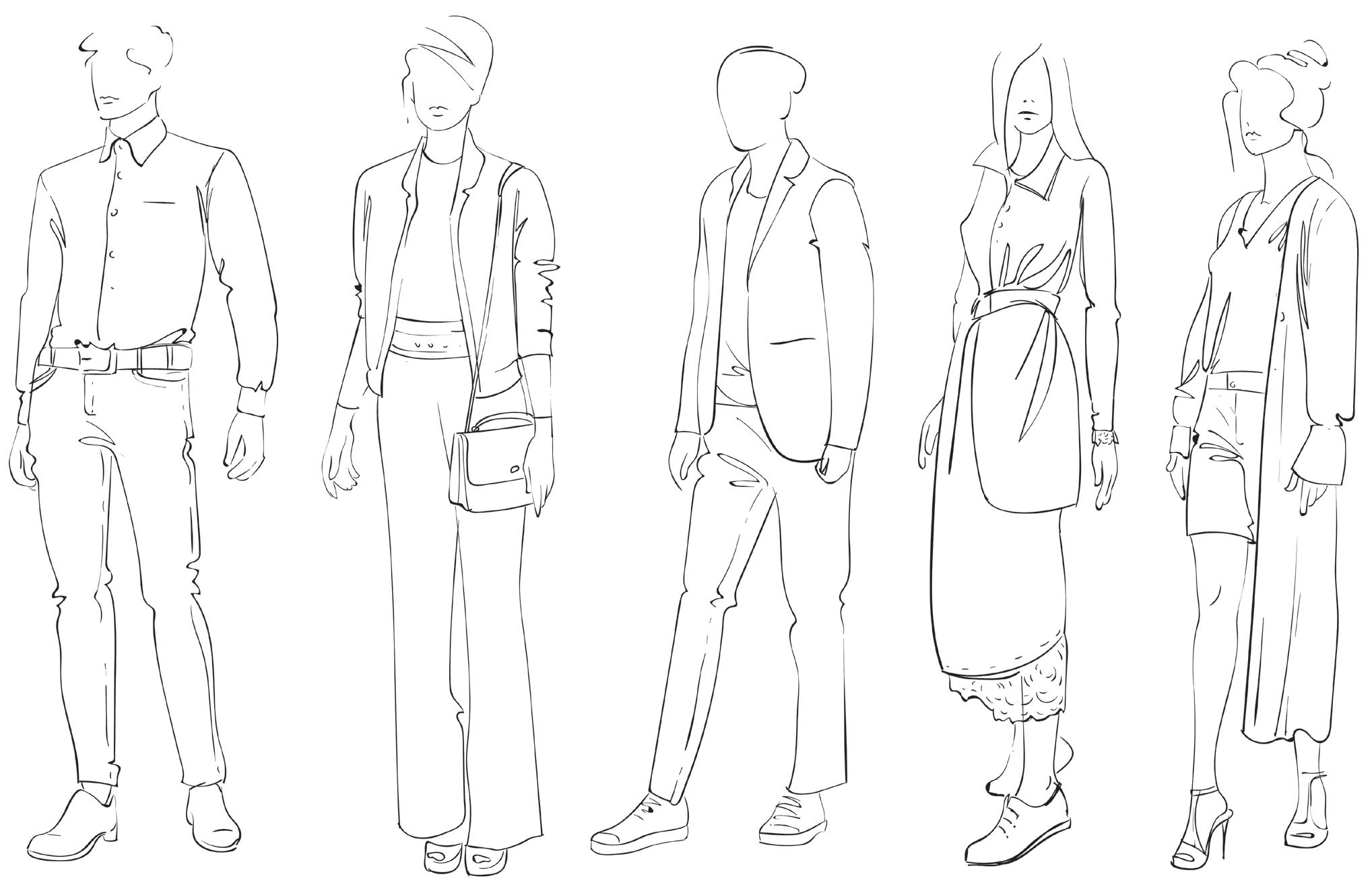
trousers shoes skirt
rabbit: coniglio
hamster: criceto
parrot: pappagallo
cat: gatto
dog: cane
mouse: topo
bird: uccello
horse: cavallo
goldfish: pesce rosso
shark: squalo
lion: leone
monkey: scimmia
giraffe: giraffa
tiger: tigre
bat: pipistrello
elephant: elefante
turtle: tartaruga marina


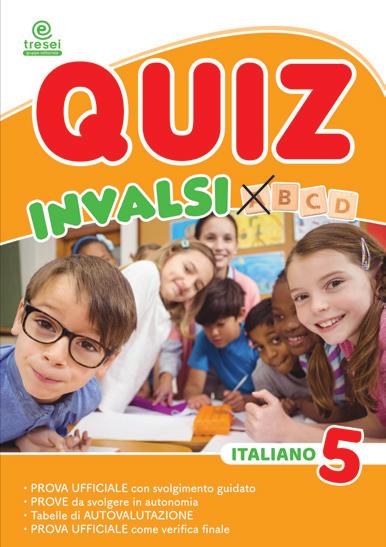

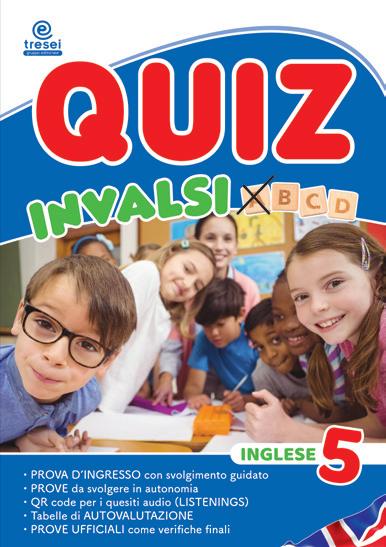
Gli eserciziari QUIZ INVALSI contengono un ricco percorso (128 pagine!) per prepararsi con graduale autonomia alle prove nazionali di italiano e matematica, previste per le classi seconda e quinta della Scuola Primaria, e di inglese (classe quinta).
Ogni eserciziario di italiano e matematica è così strutturato:
• una prova ufficiale GUIDATA e altre inedite da svolgere in AUTONOMIA, con autovalutazione (un istogramma, con le risposte corrette da colorare);
• ULTIMA PROVA UFFICIALE come verifica finale.
L’eserciziario di inglese contiene:
• prove inedite: quella d’ingresso GUIDATA e altre da svolgere in AUTONOMIA, con autovalutazione;
• QR code per i quesiti audio (listenings);
• ULTIME PROVE UFFICIALI come verifica finale;
• riepilogo delle REGOLE con GLOSSARIO.
In omaggio per l’insegnante: le soluzioni dei quesiti, sia nella versione cartacea, sia online (area riservata Primaria, sul sito www.tresei.com).
